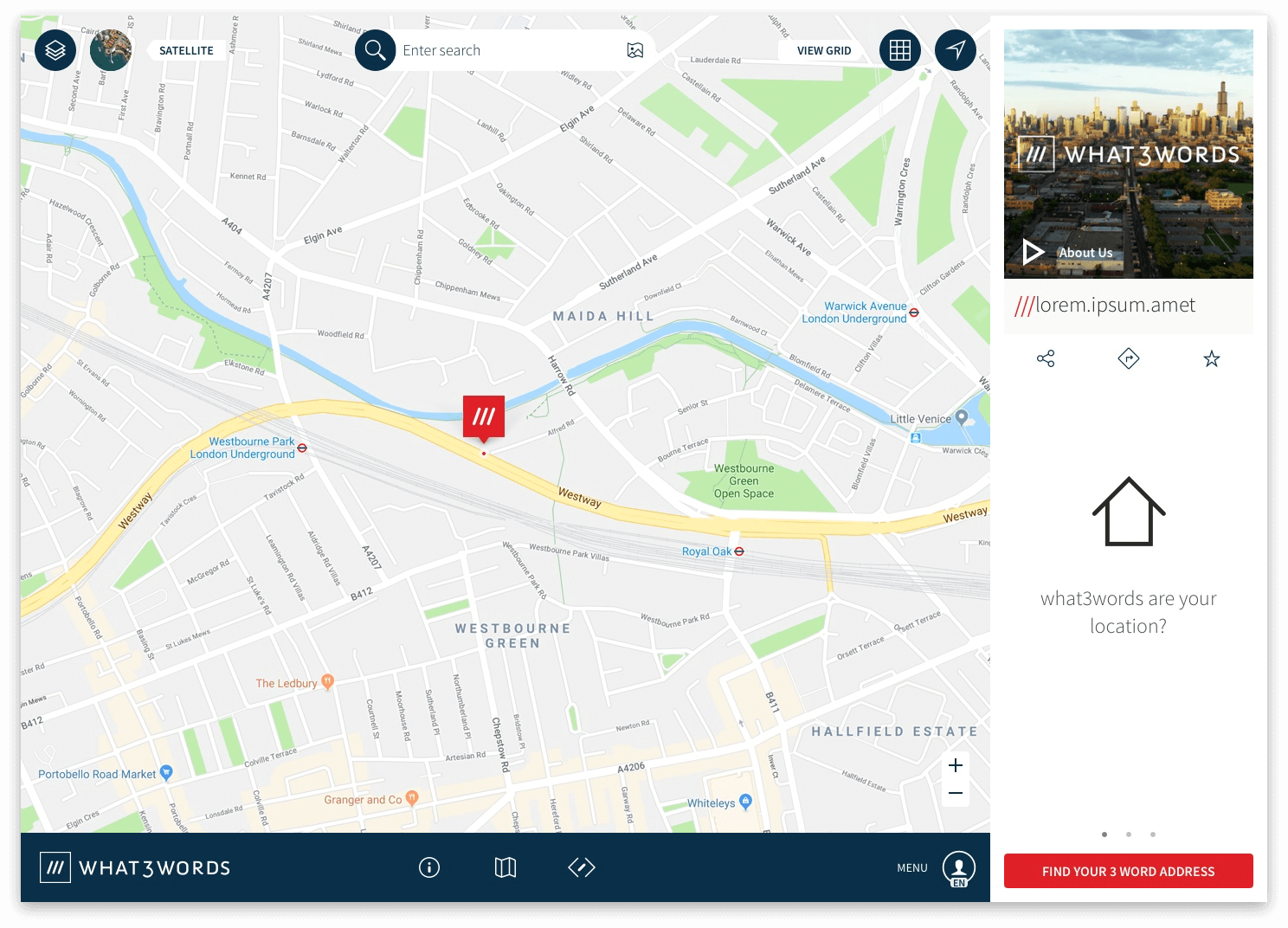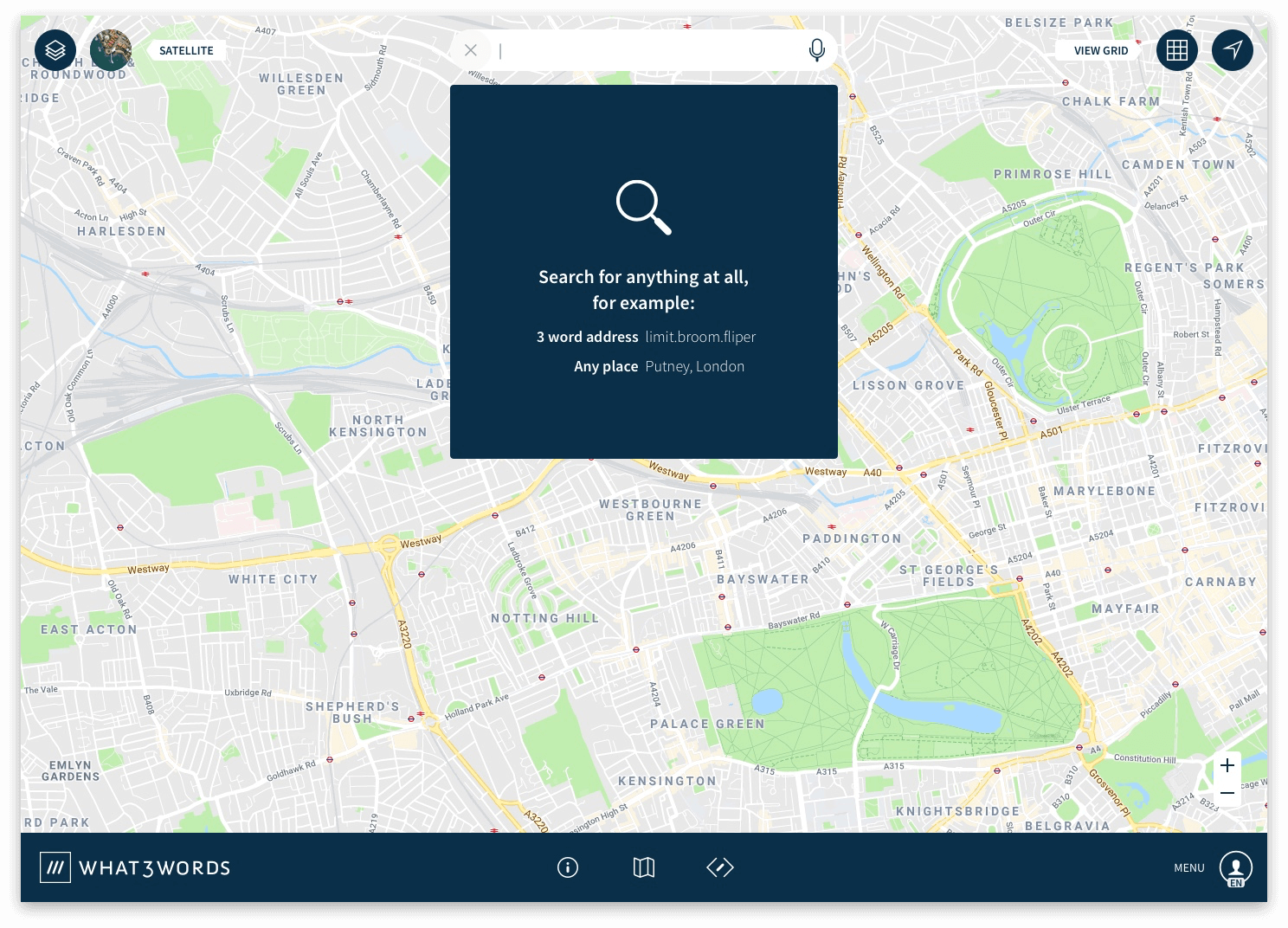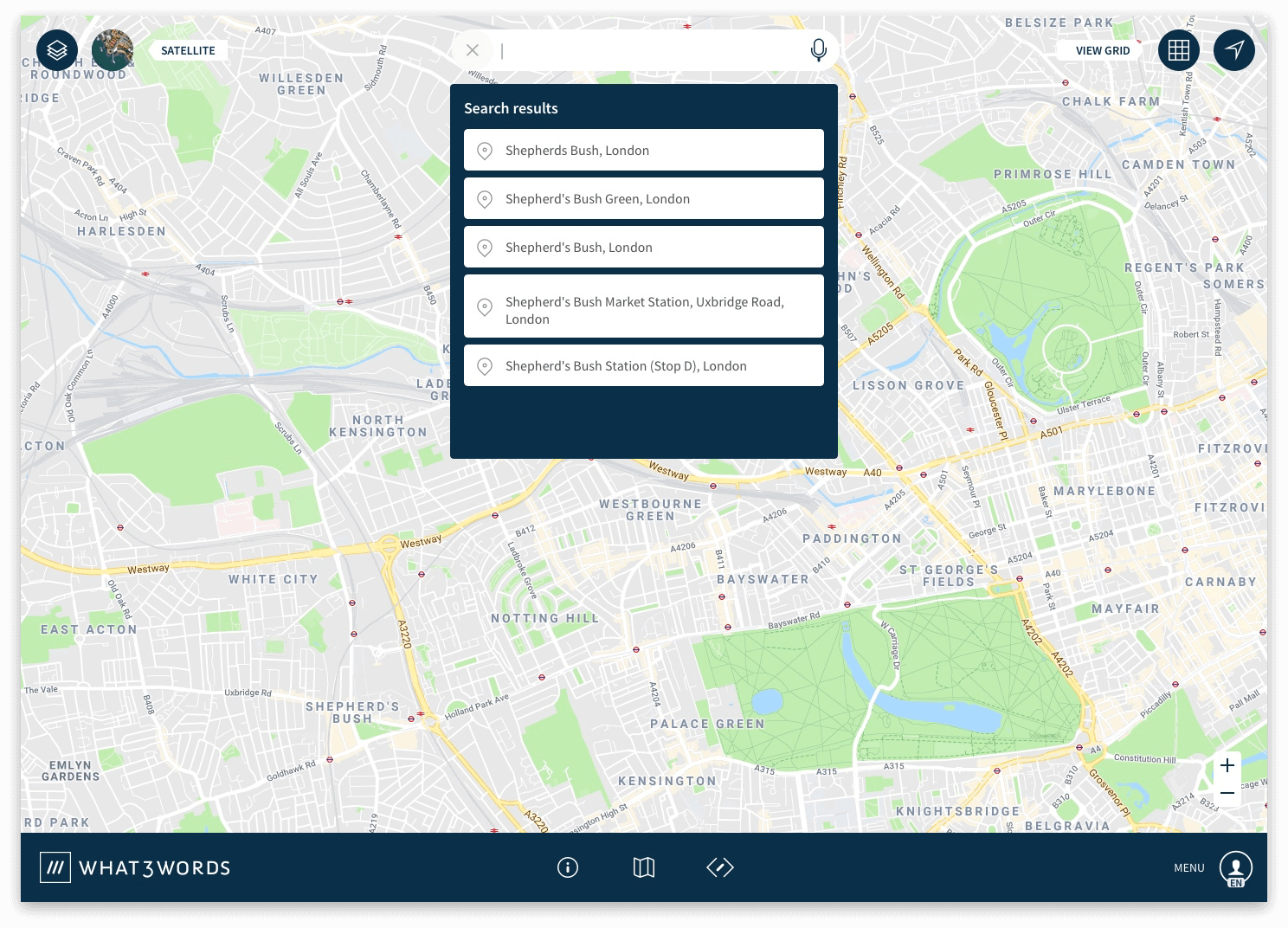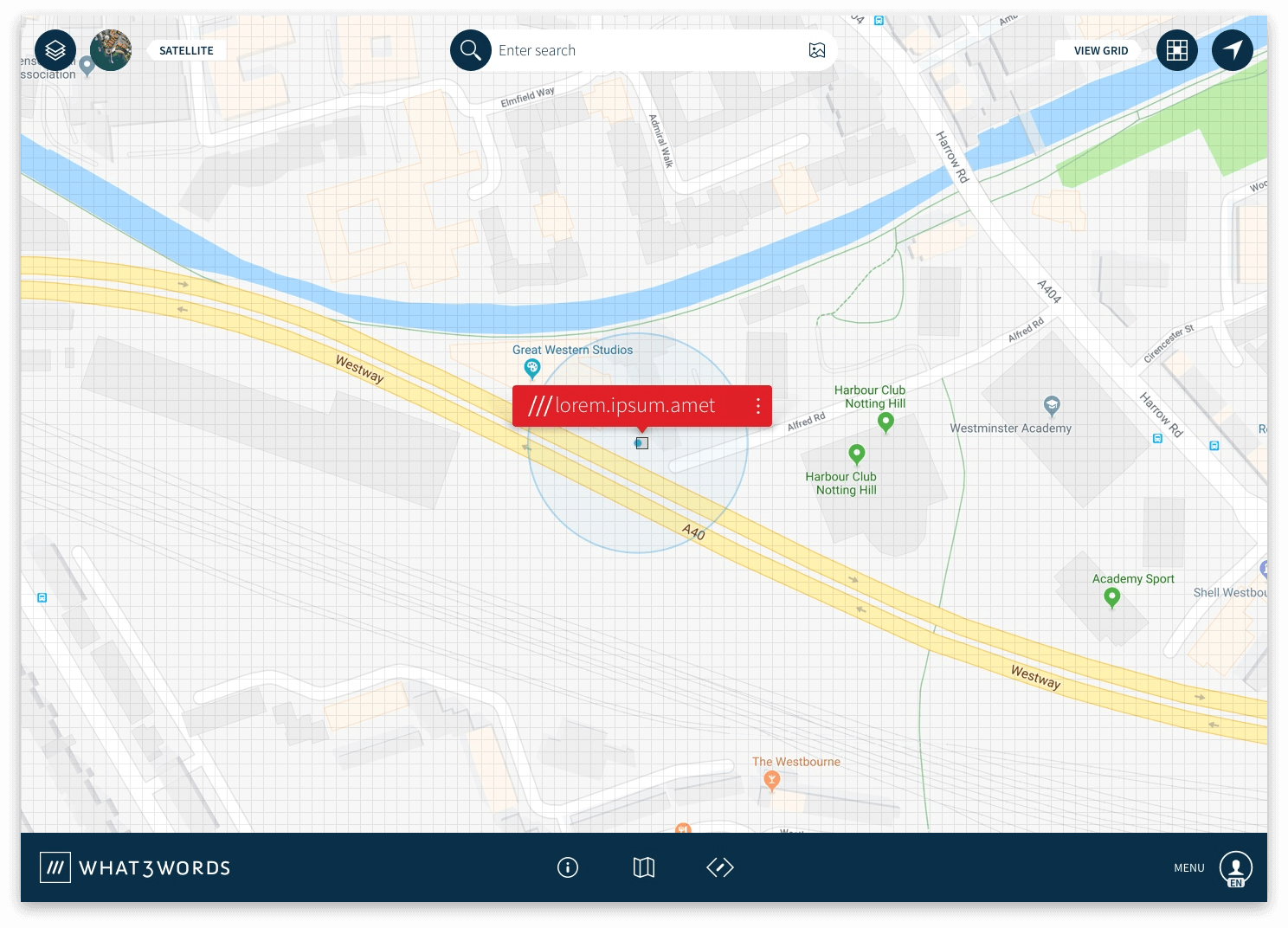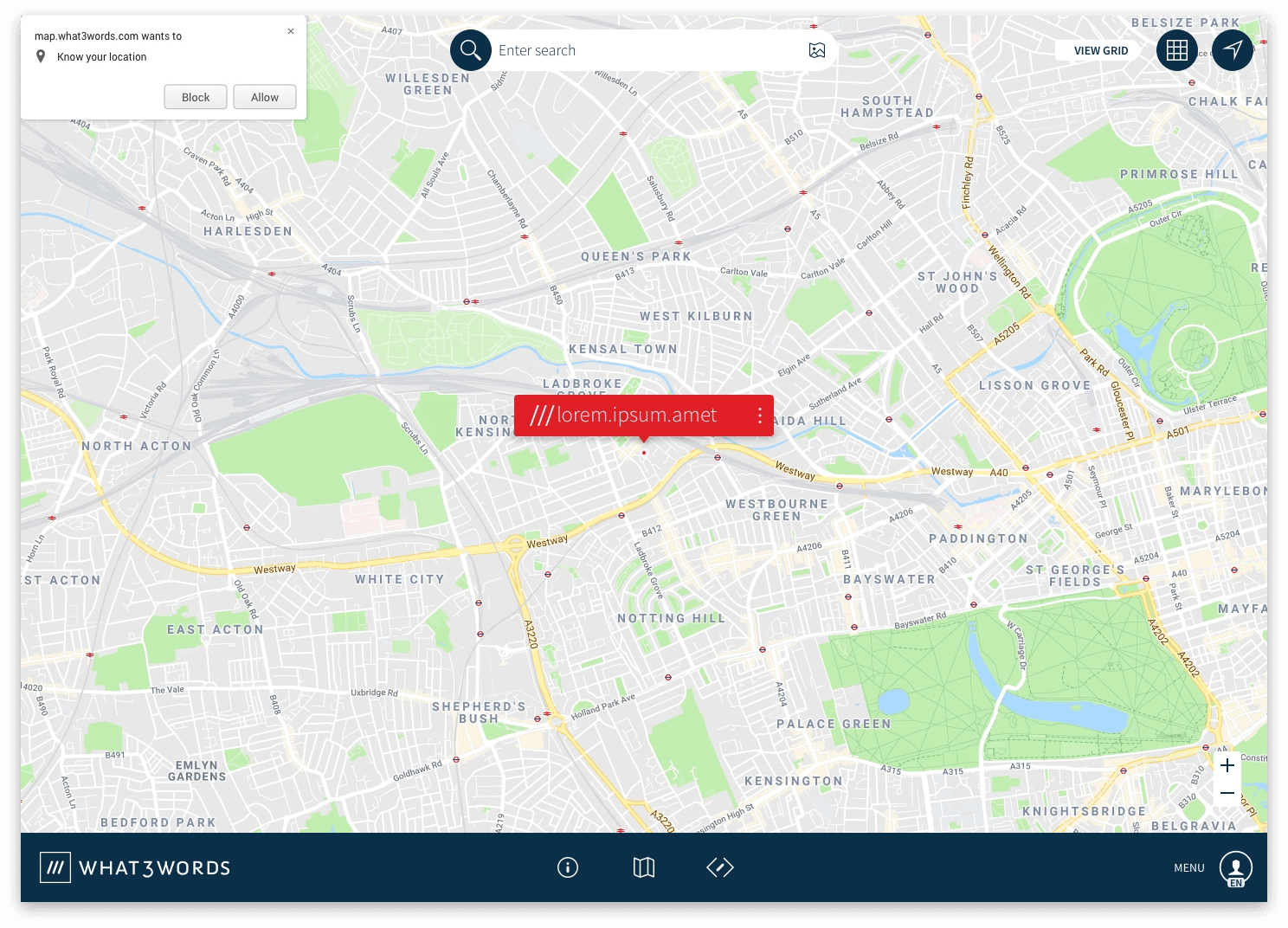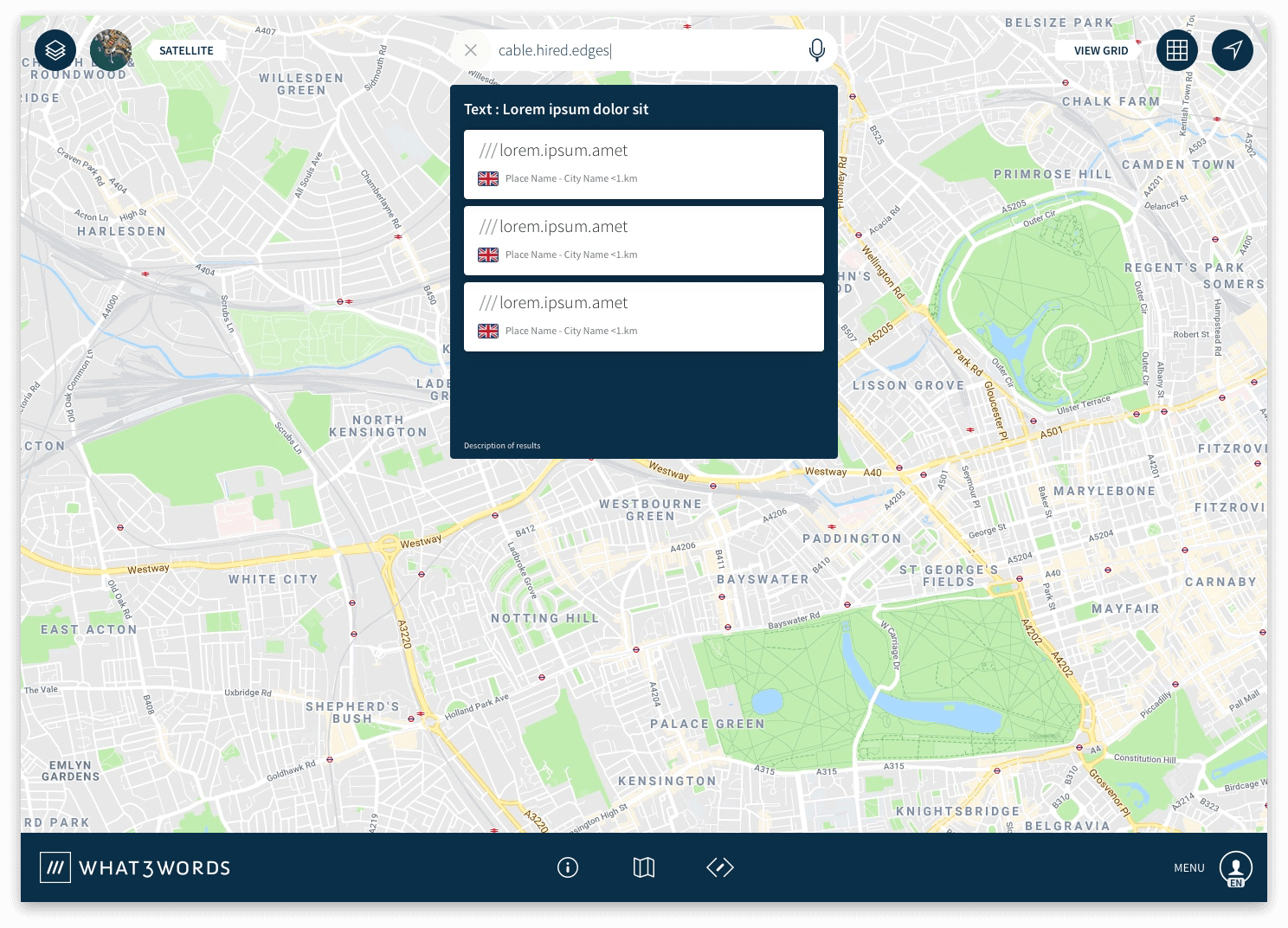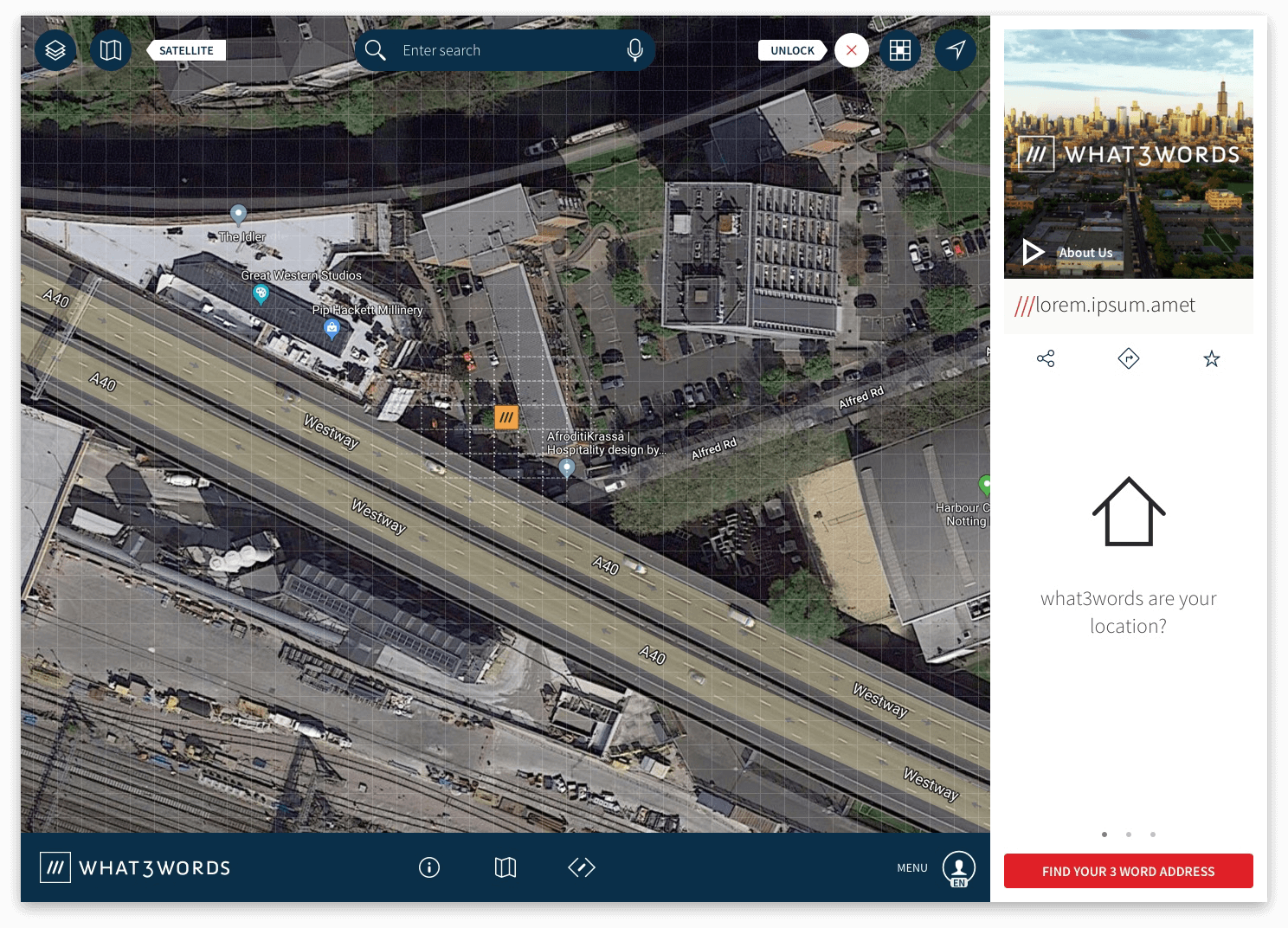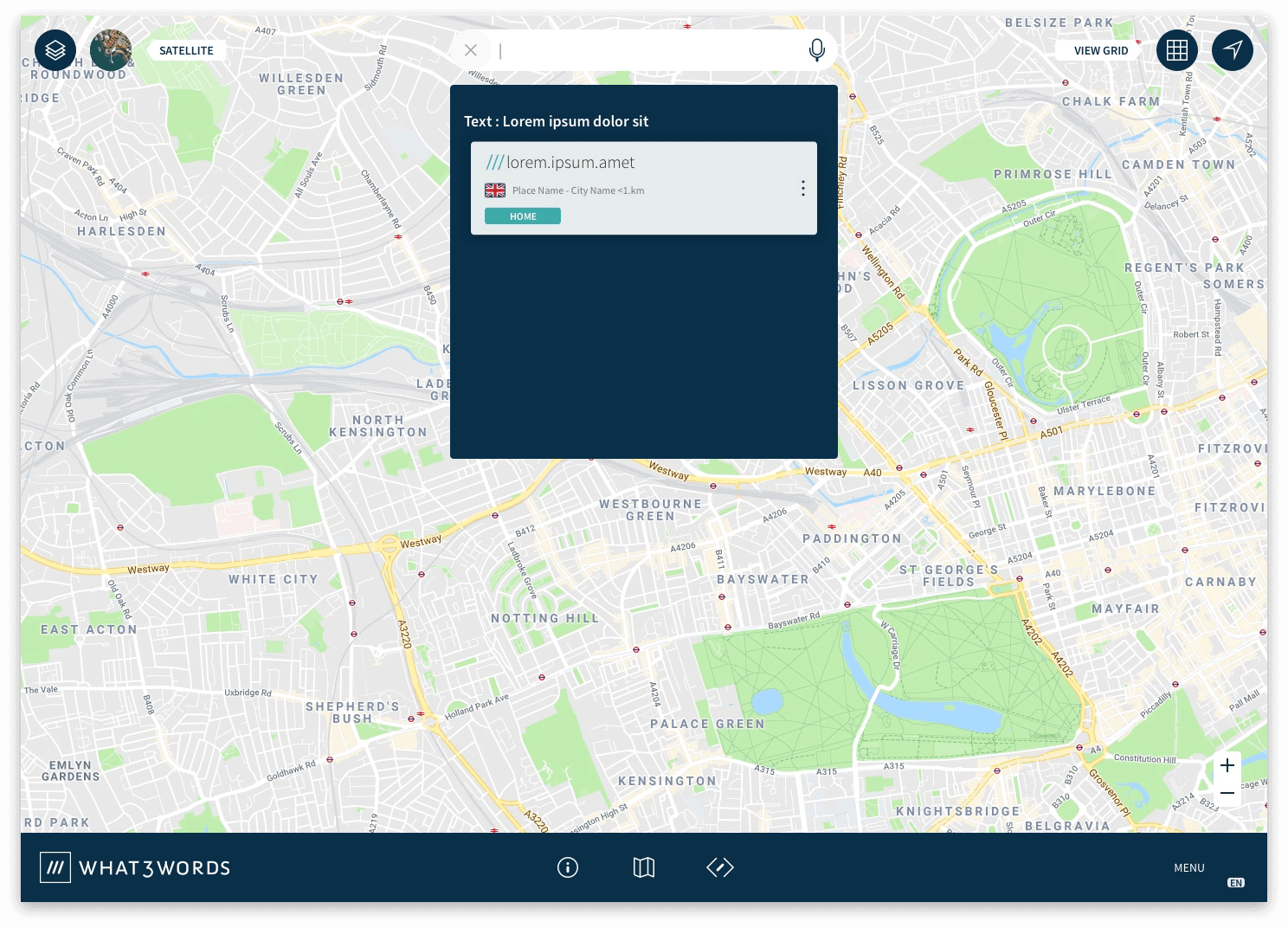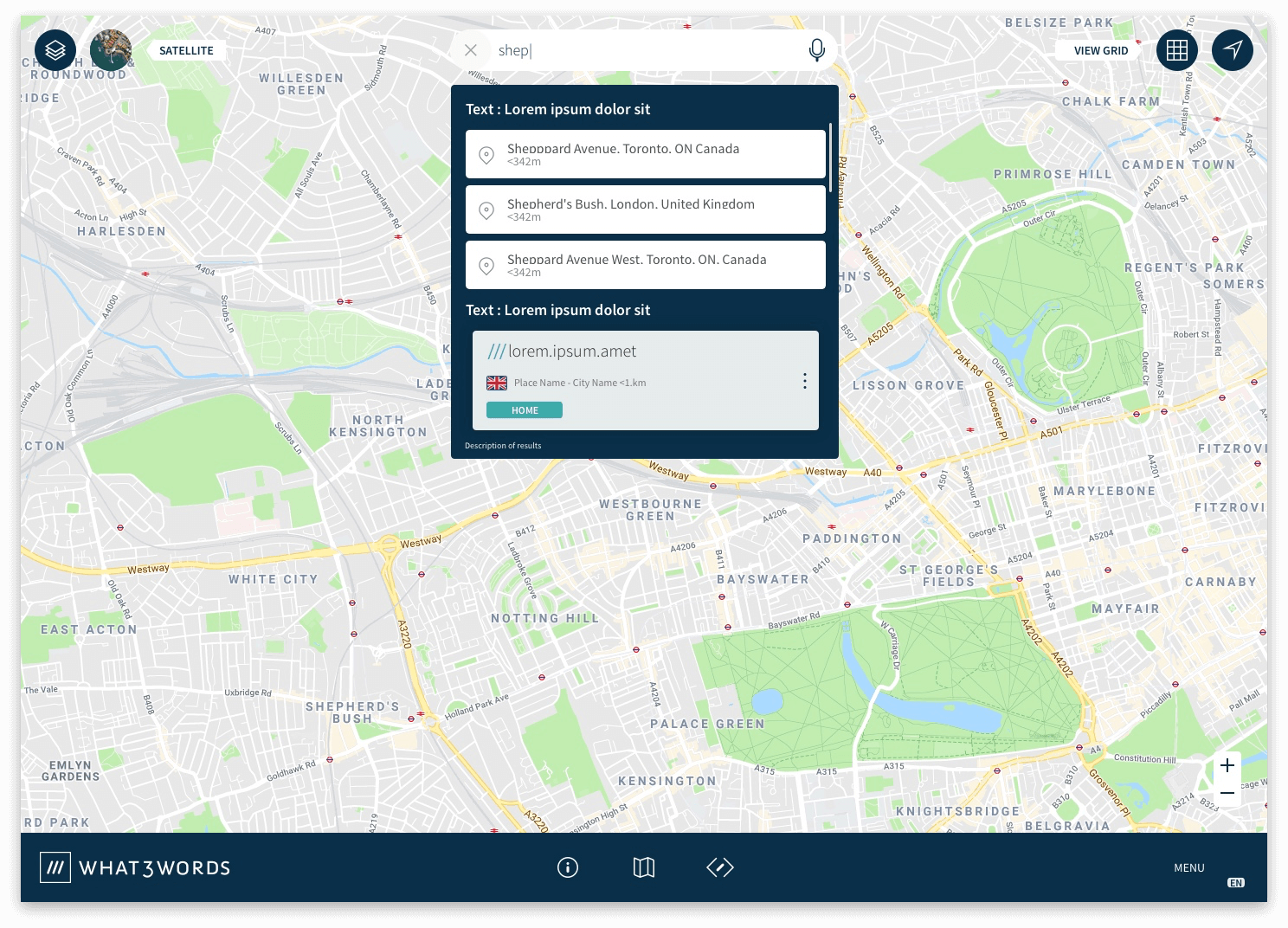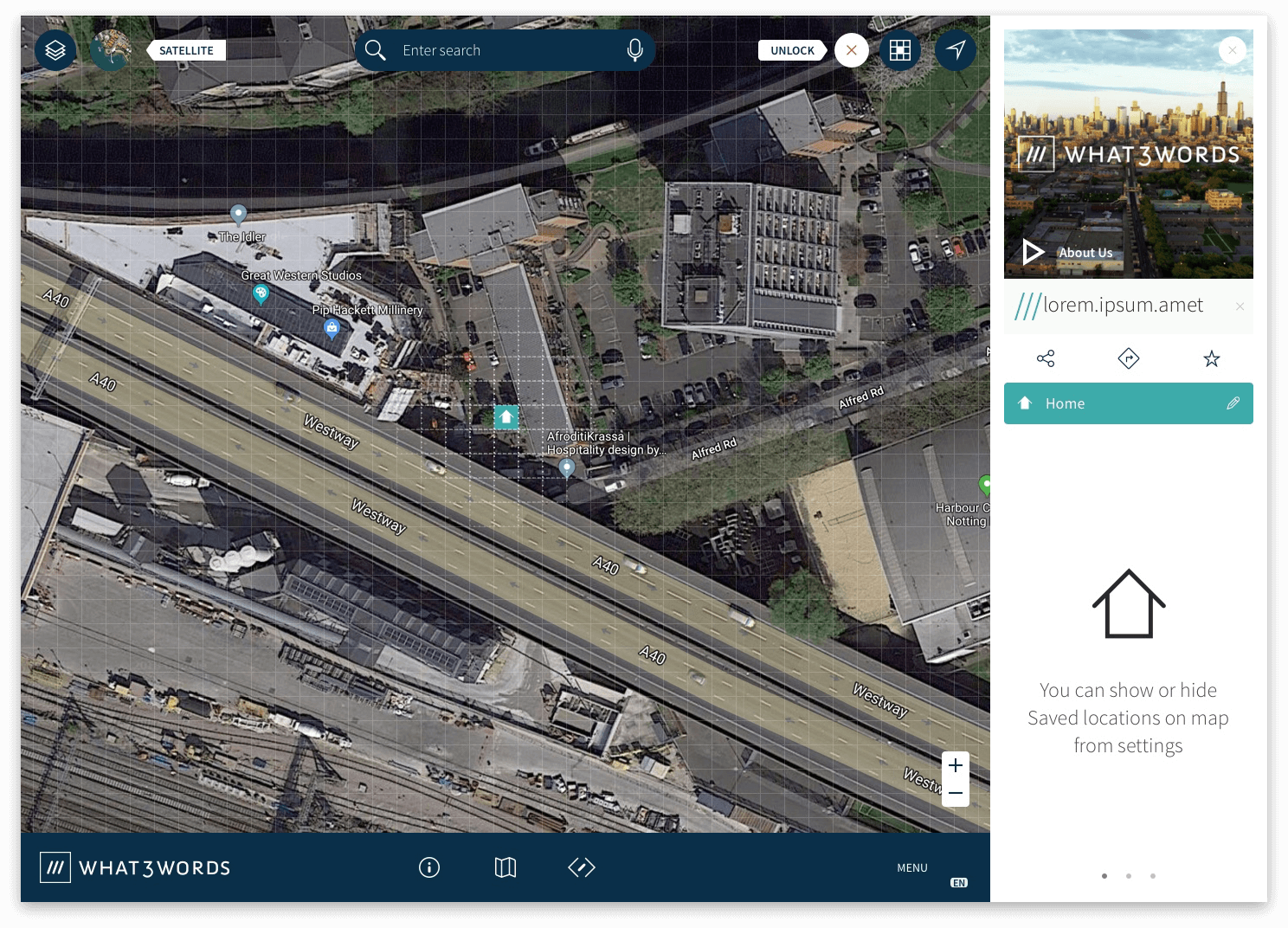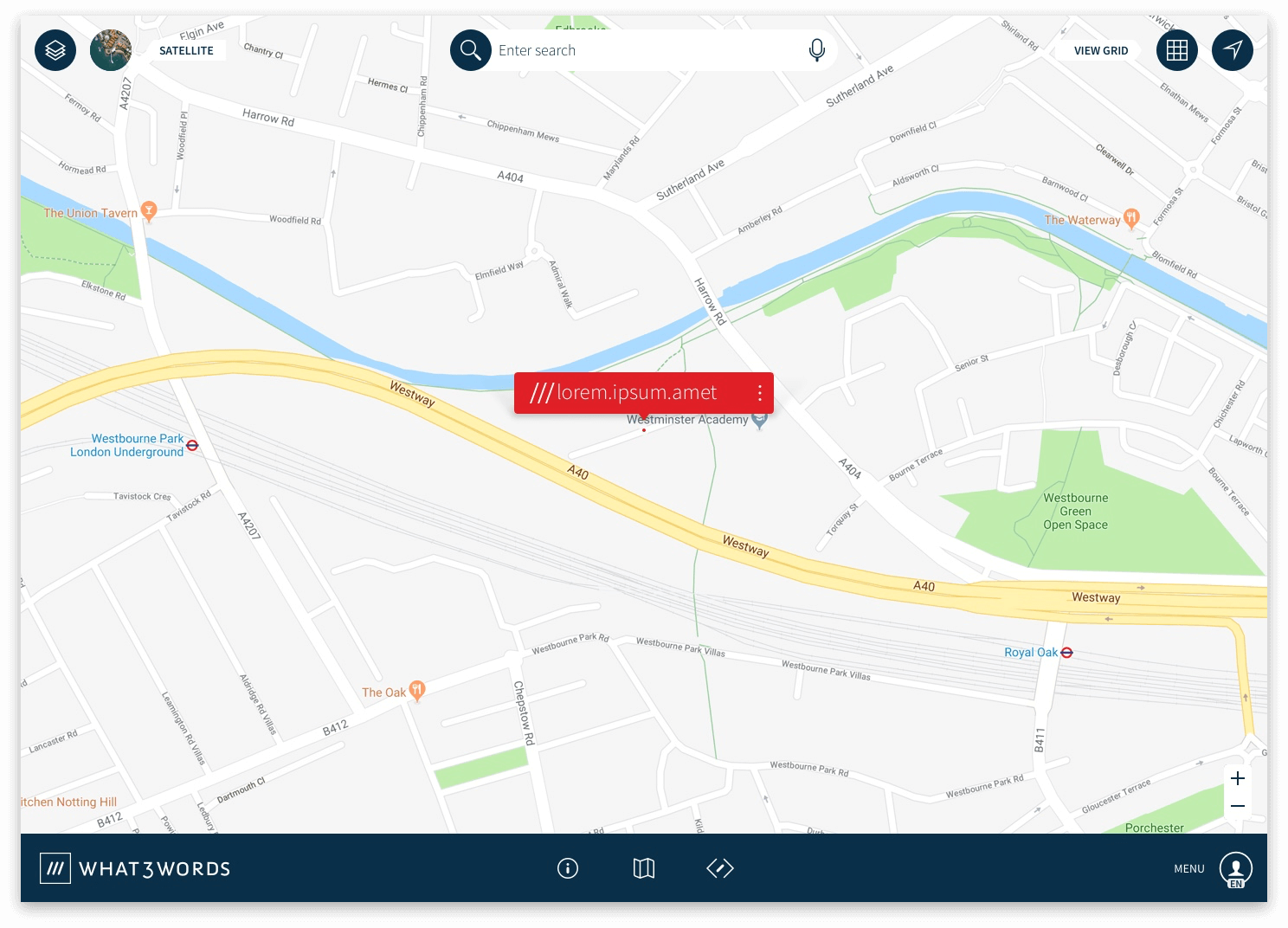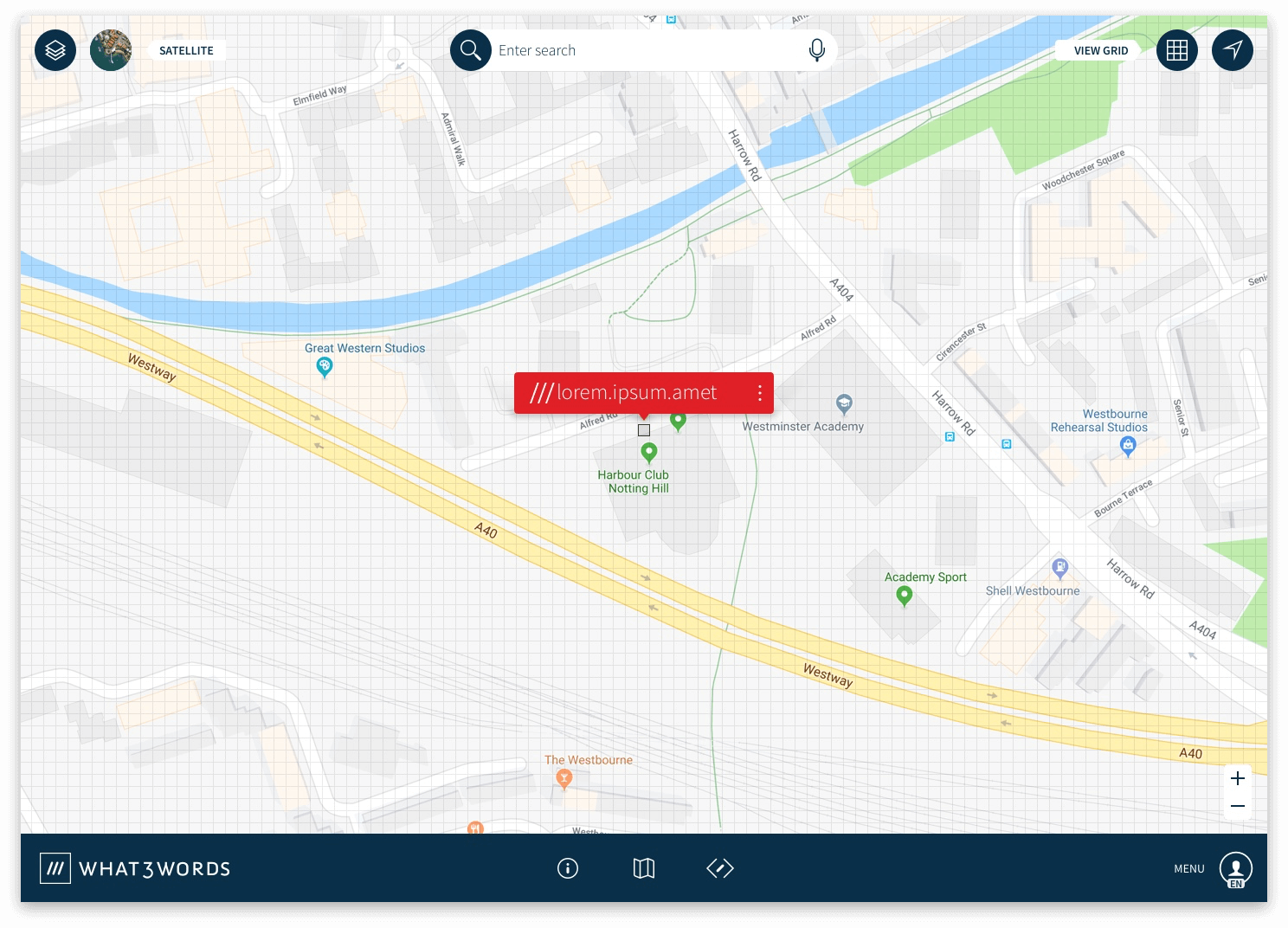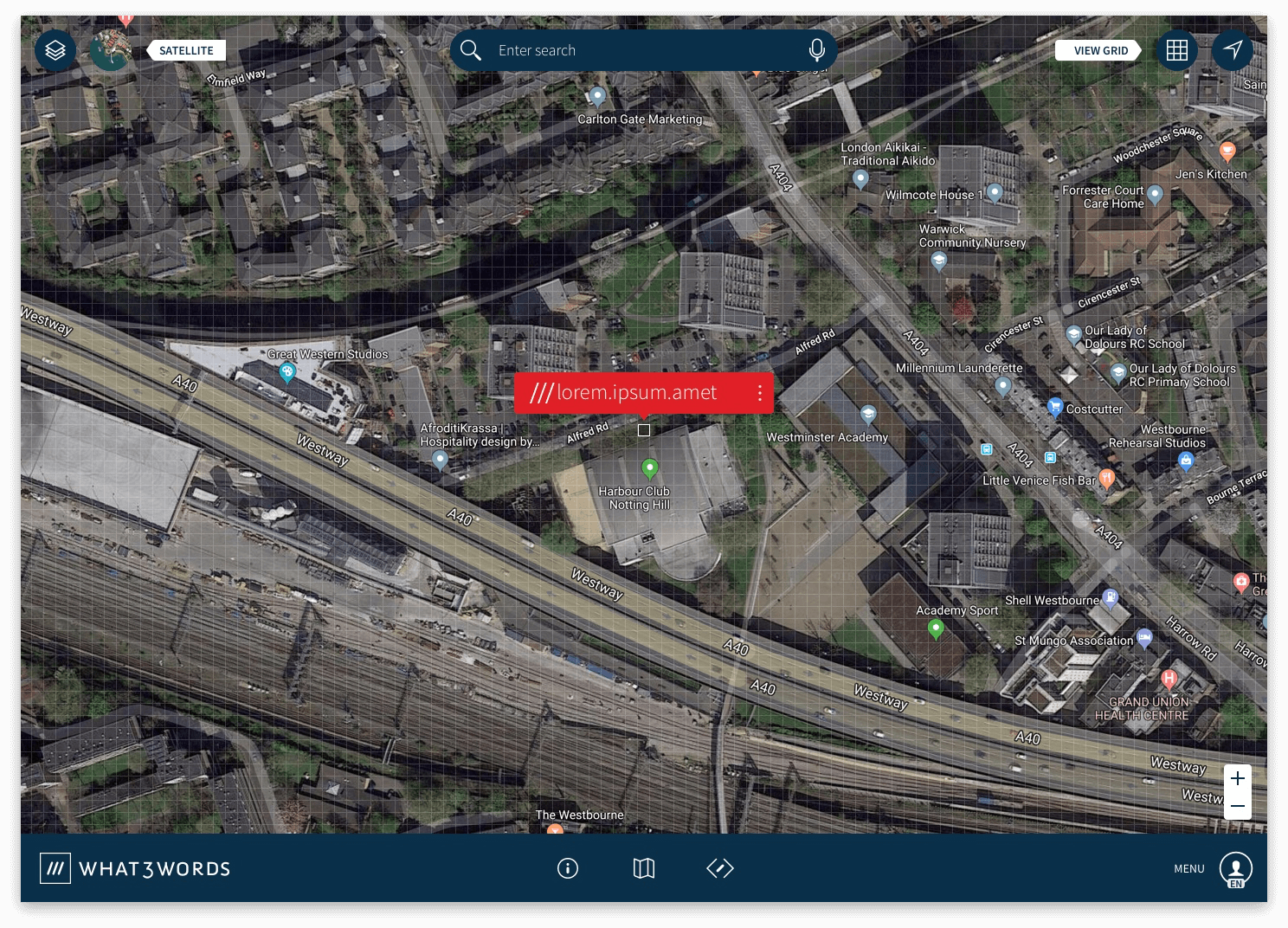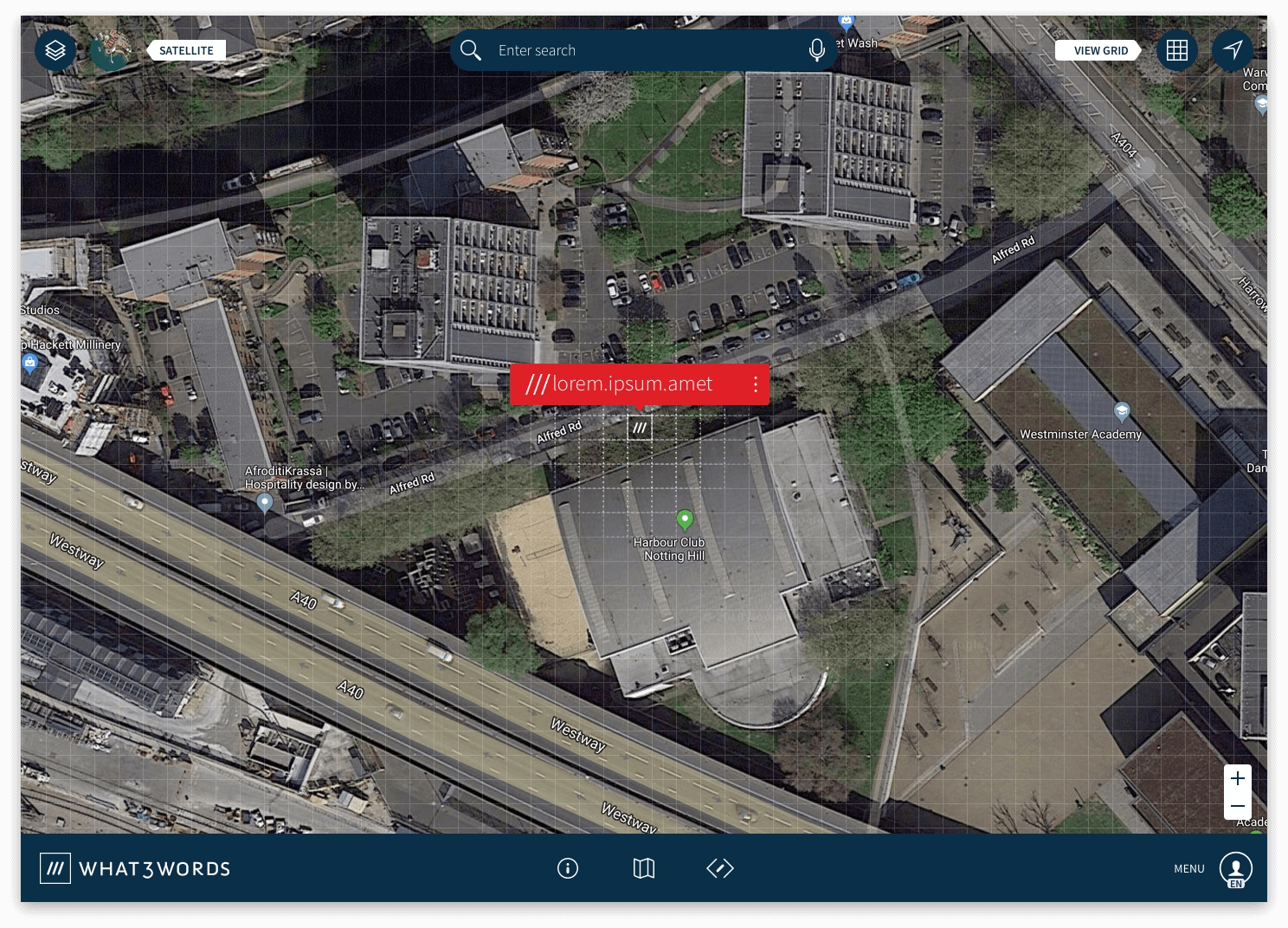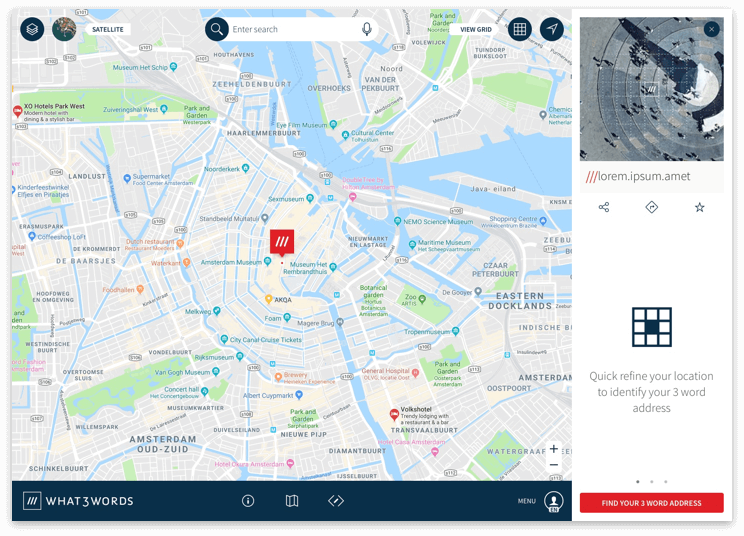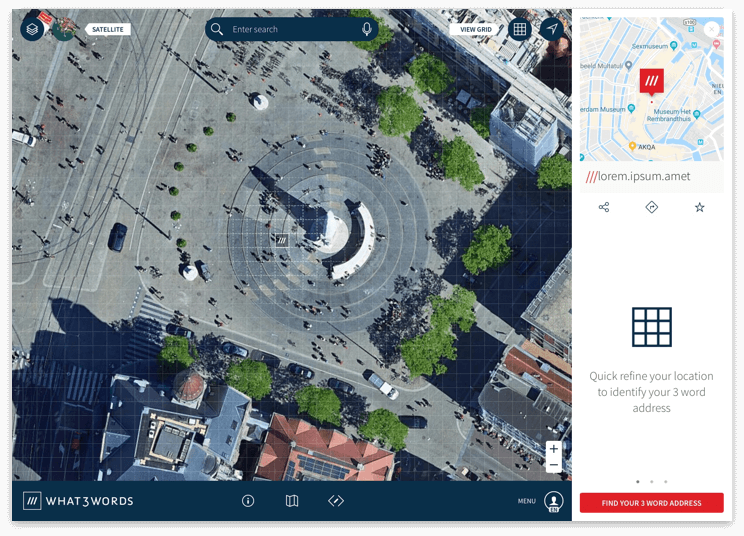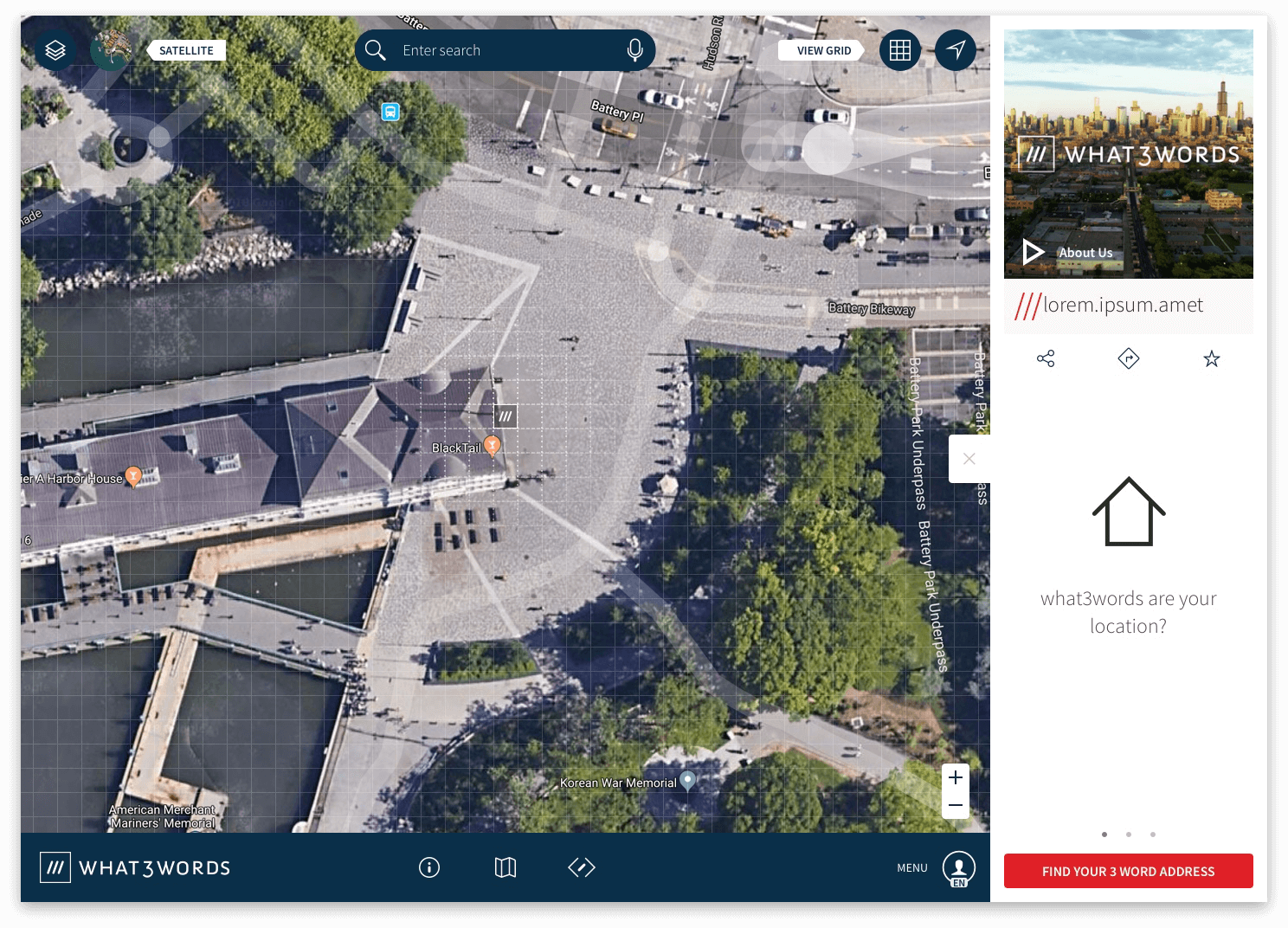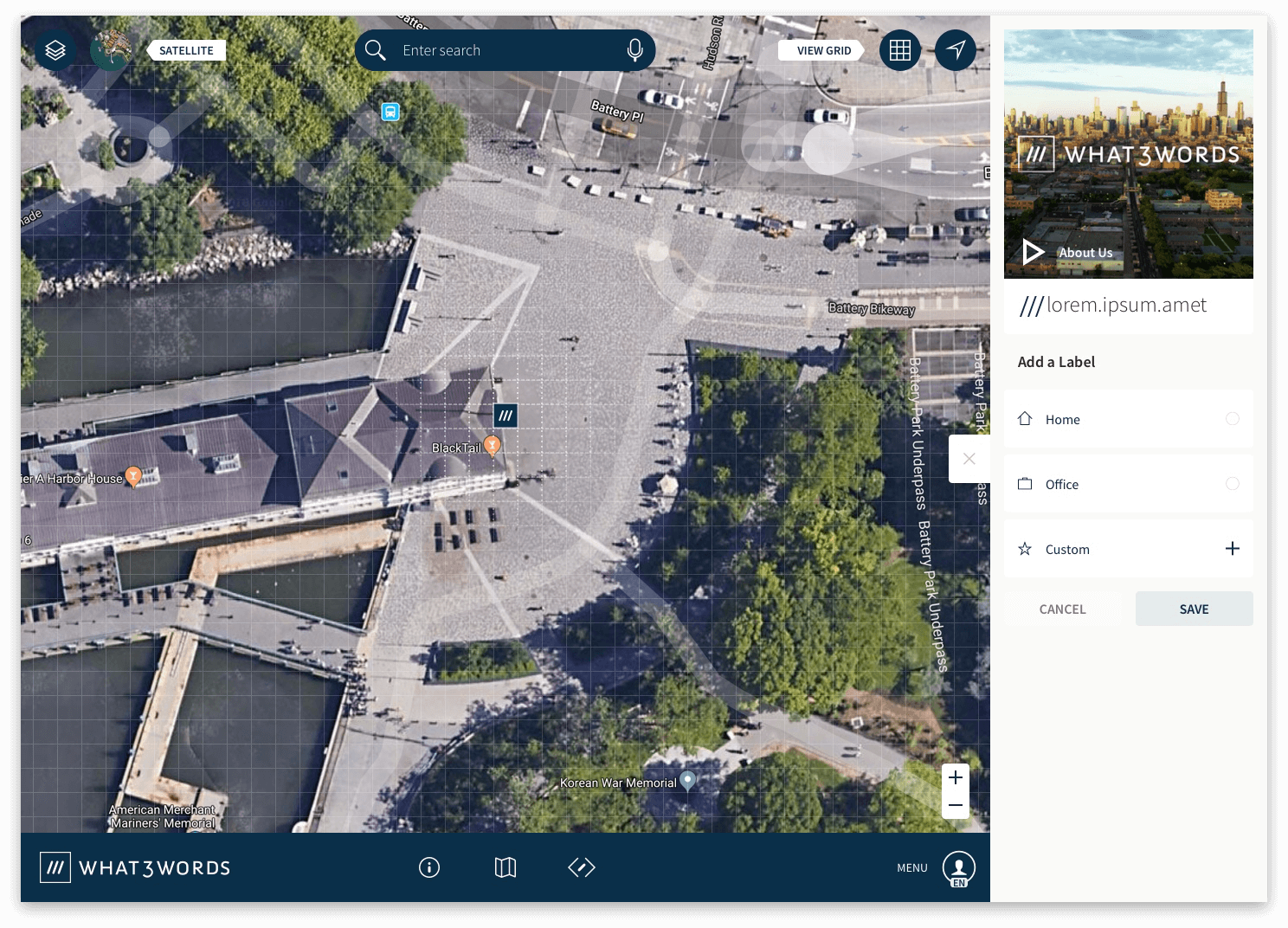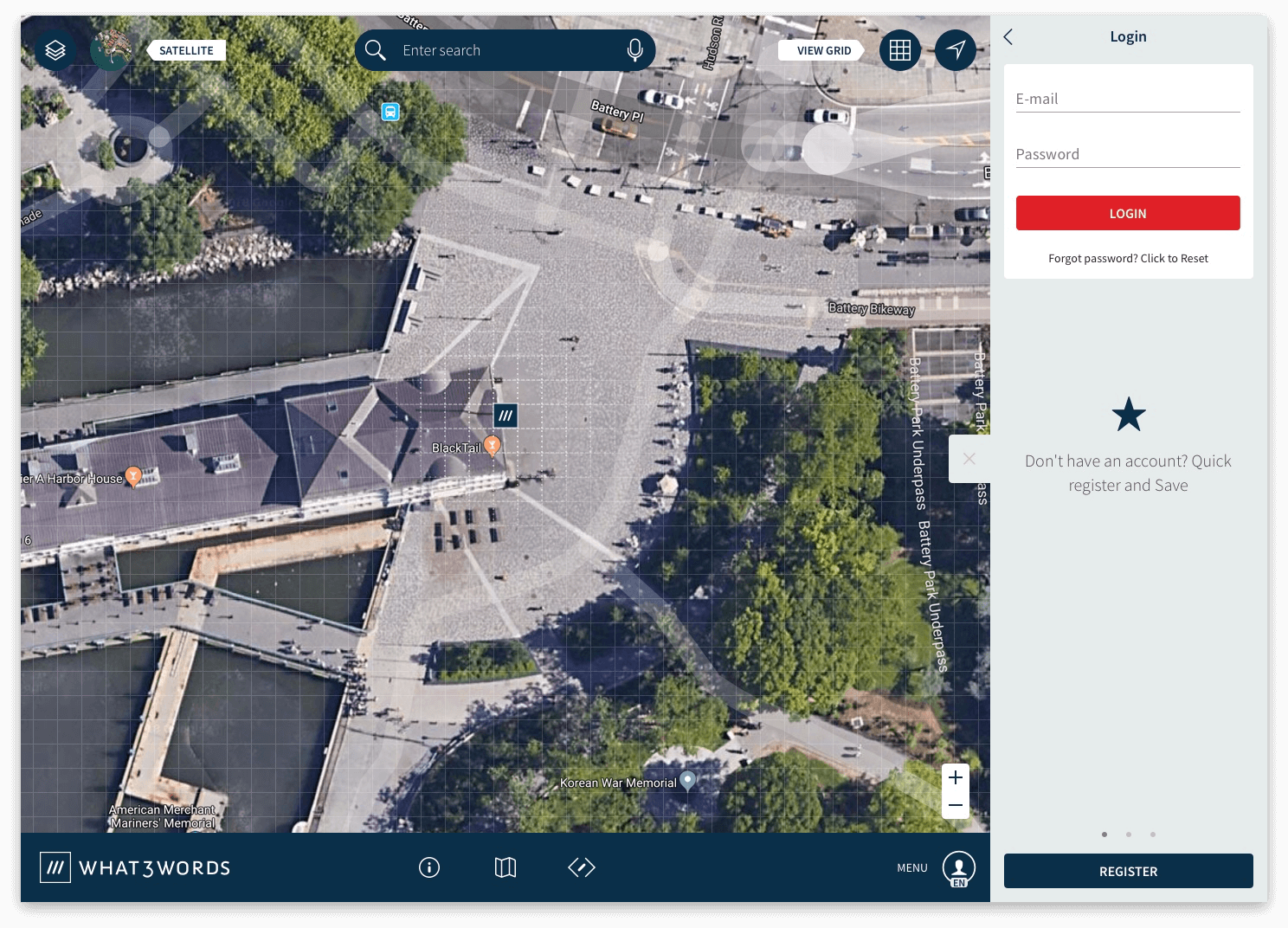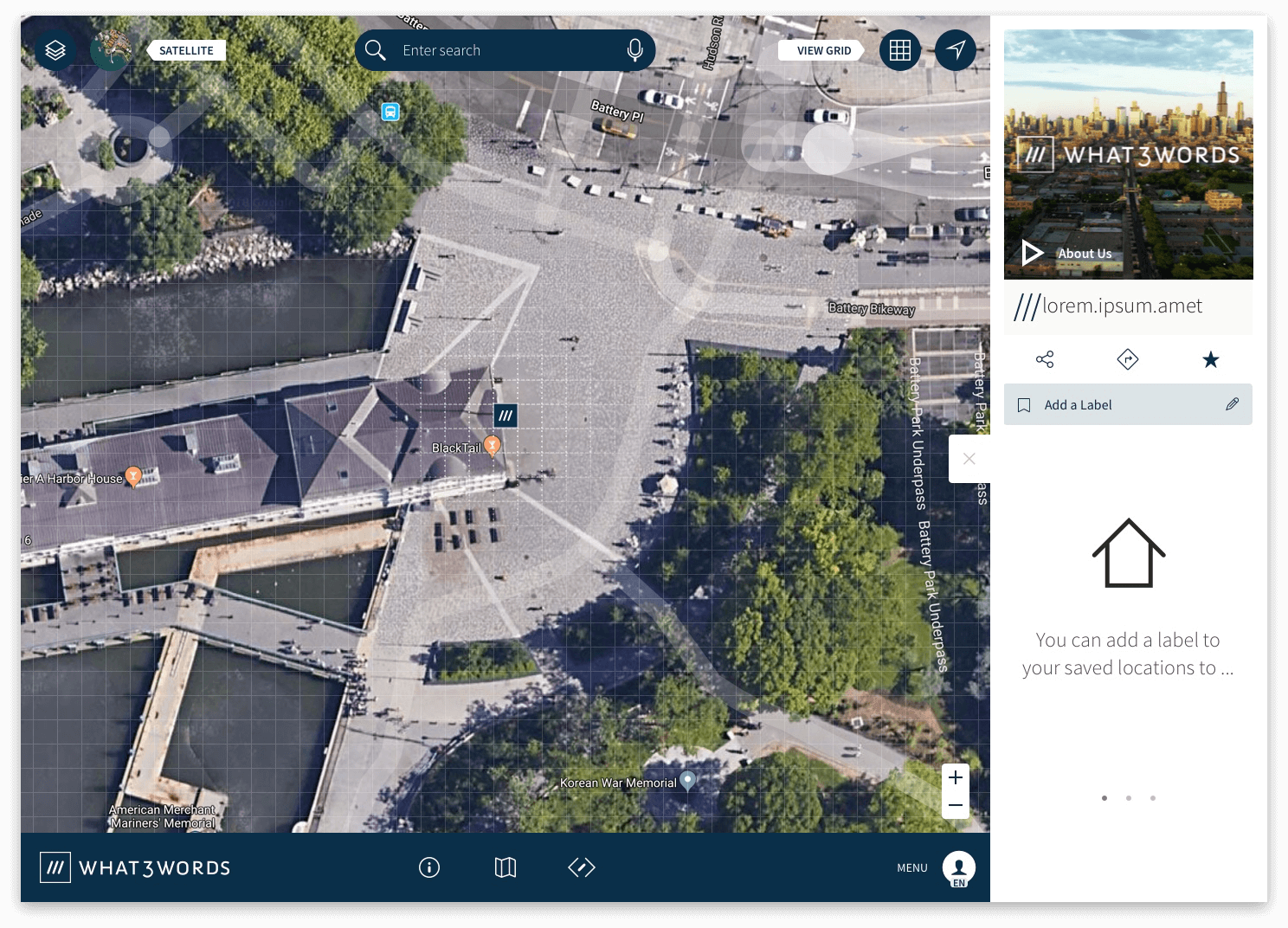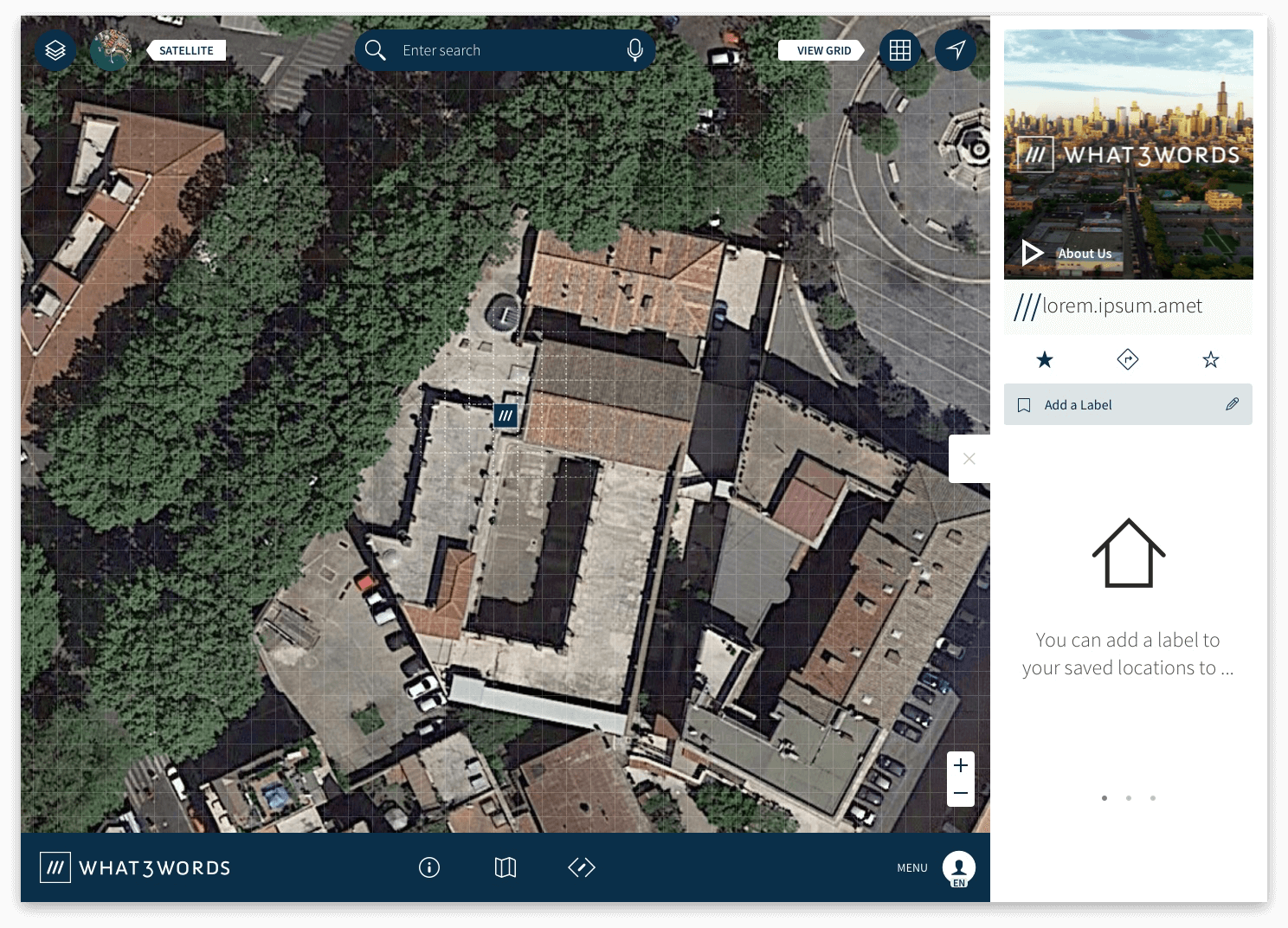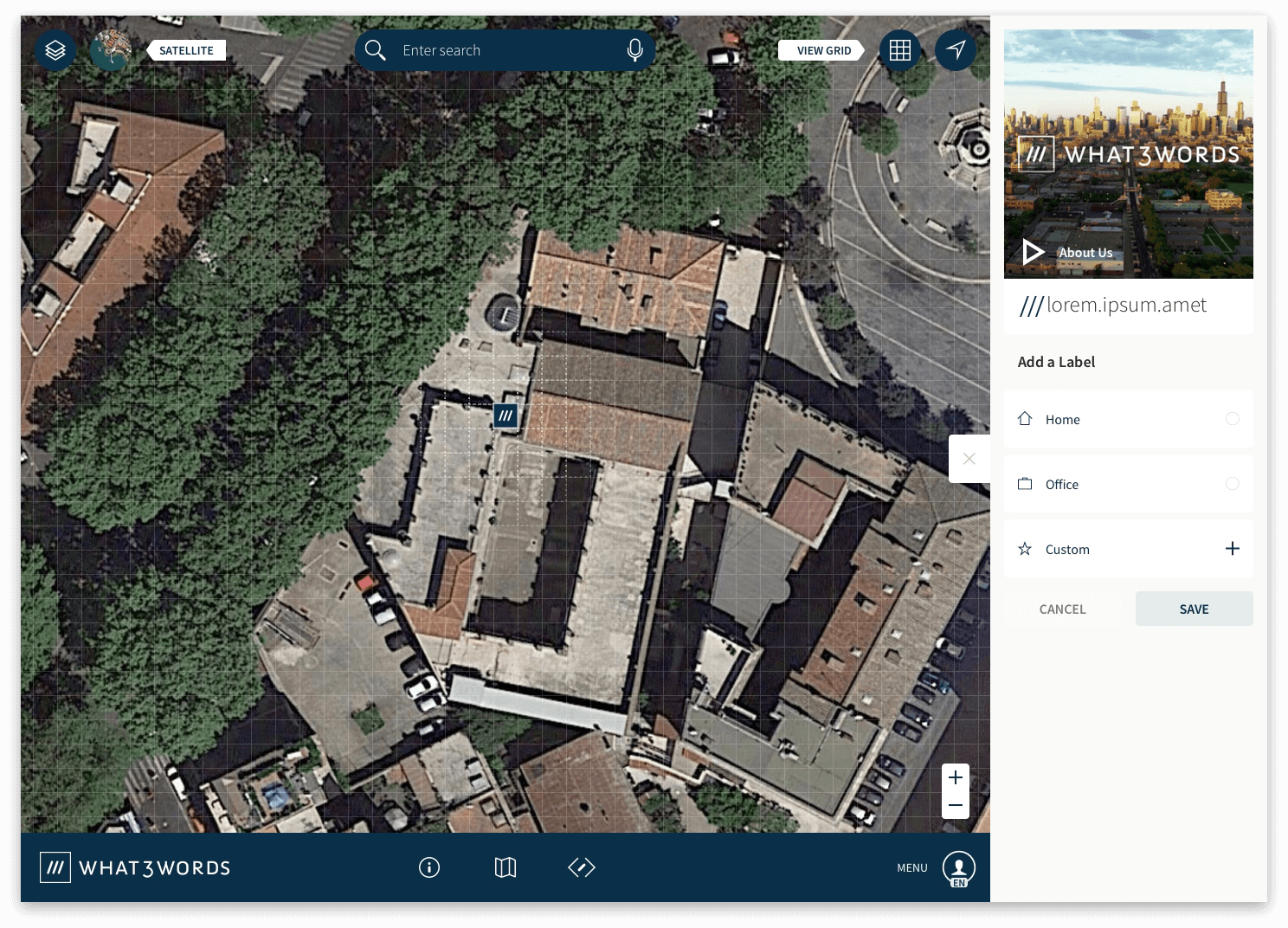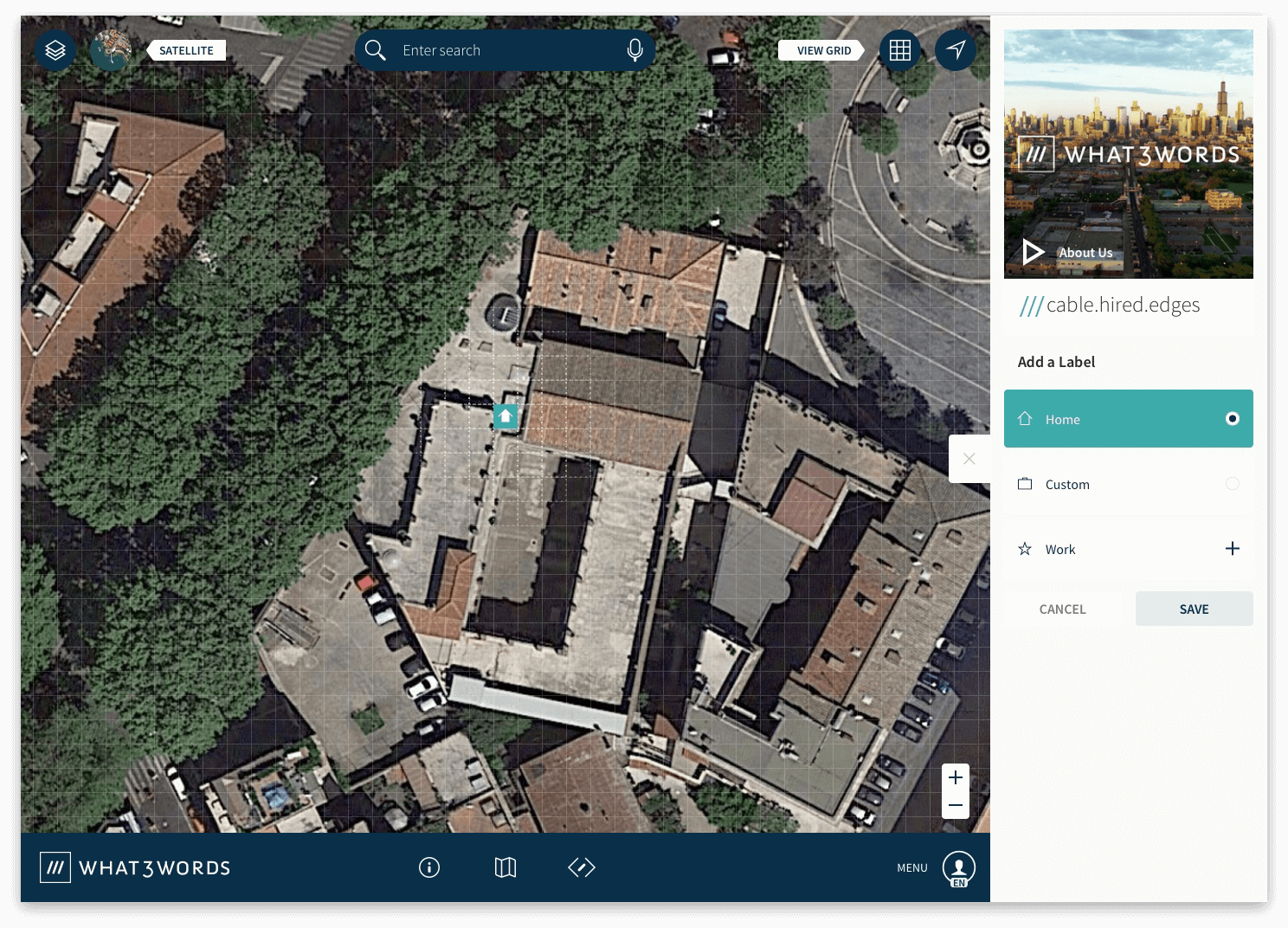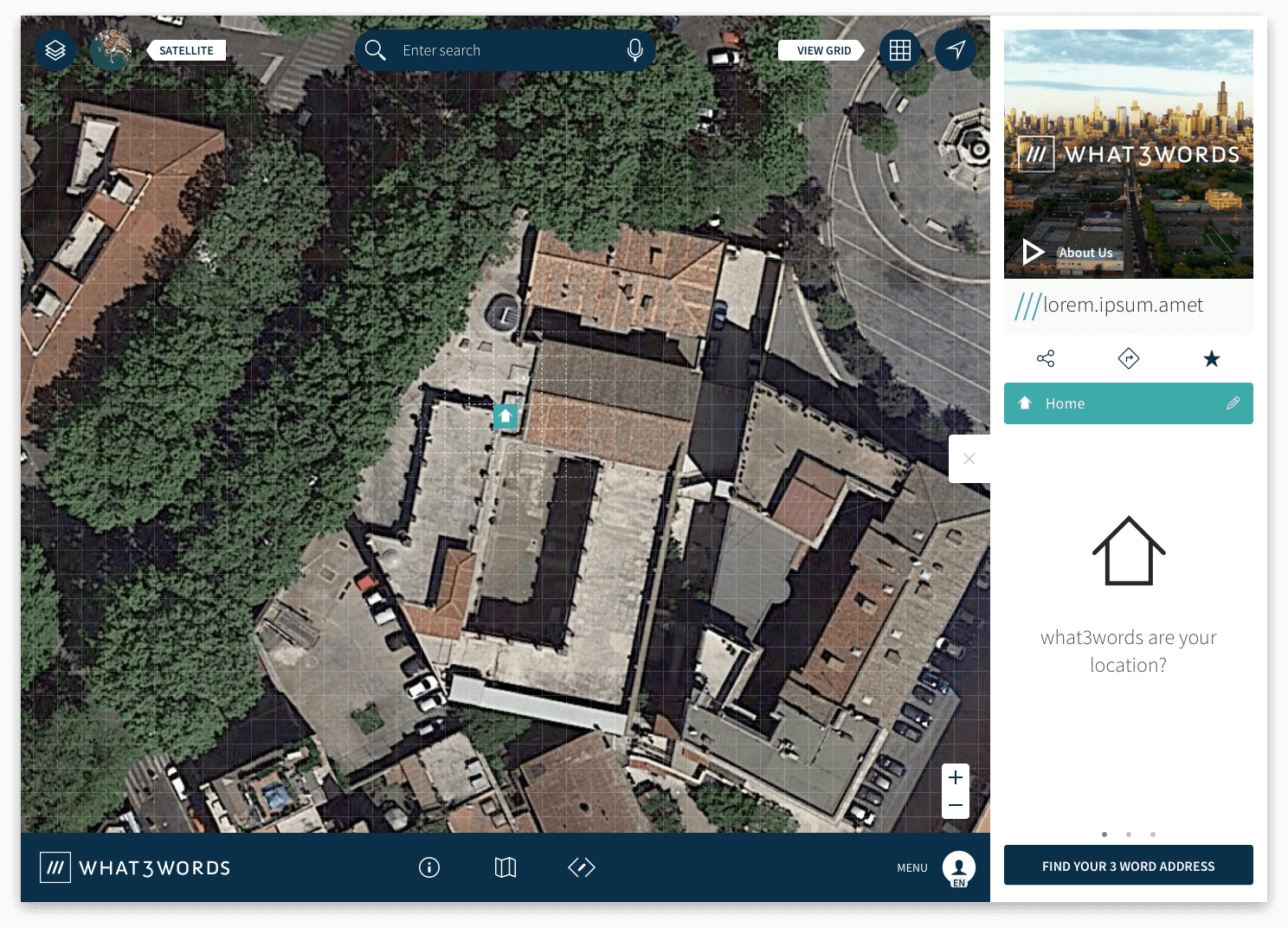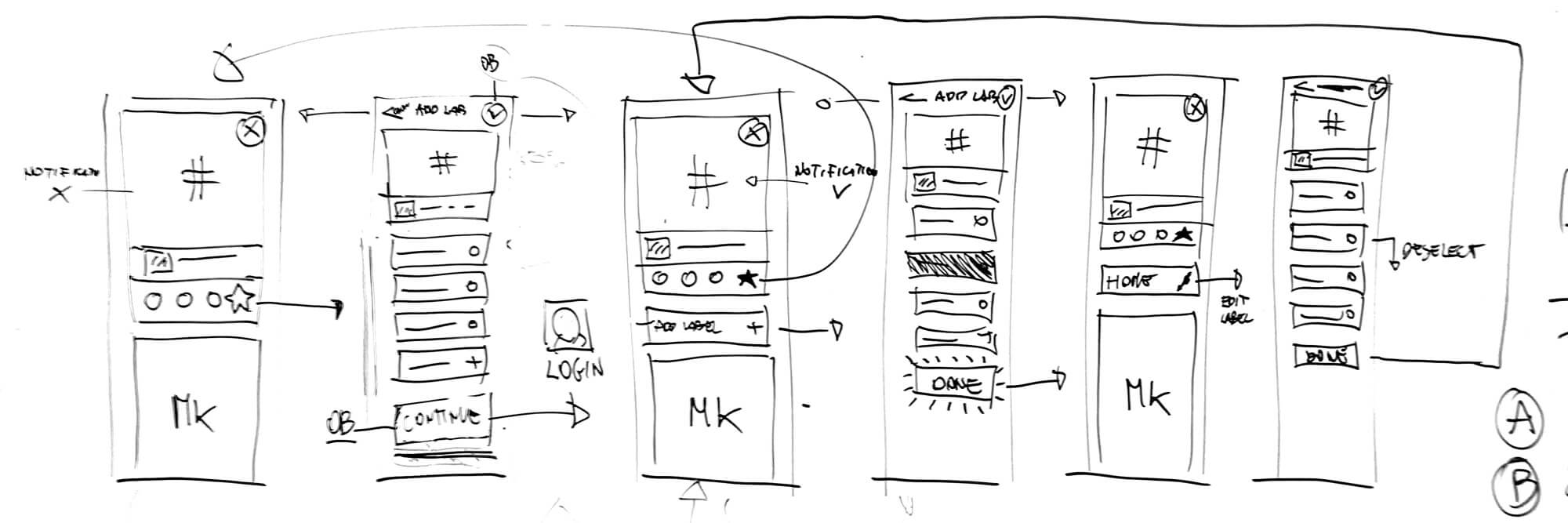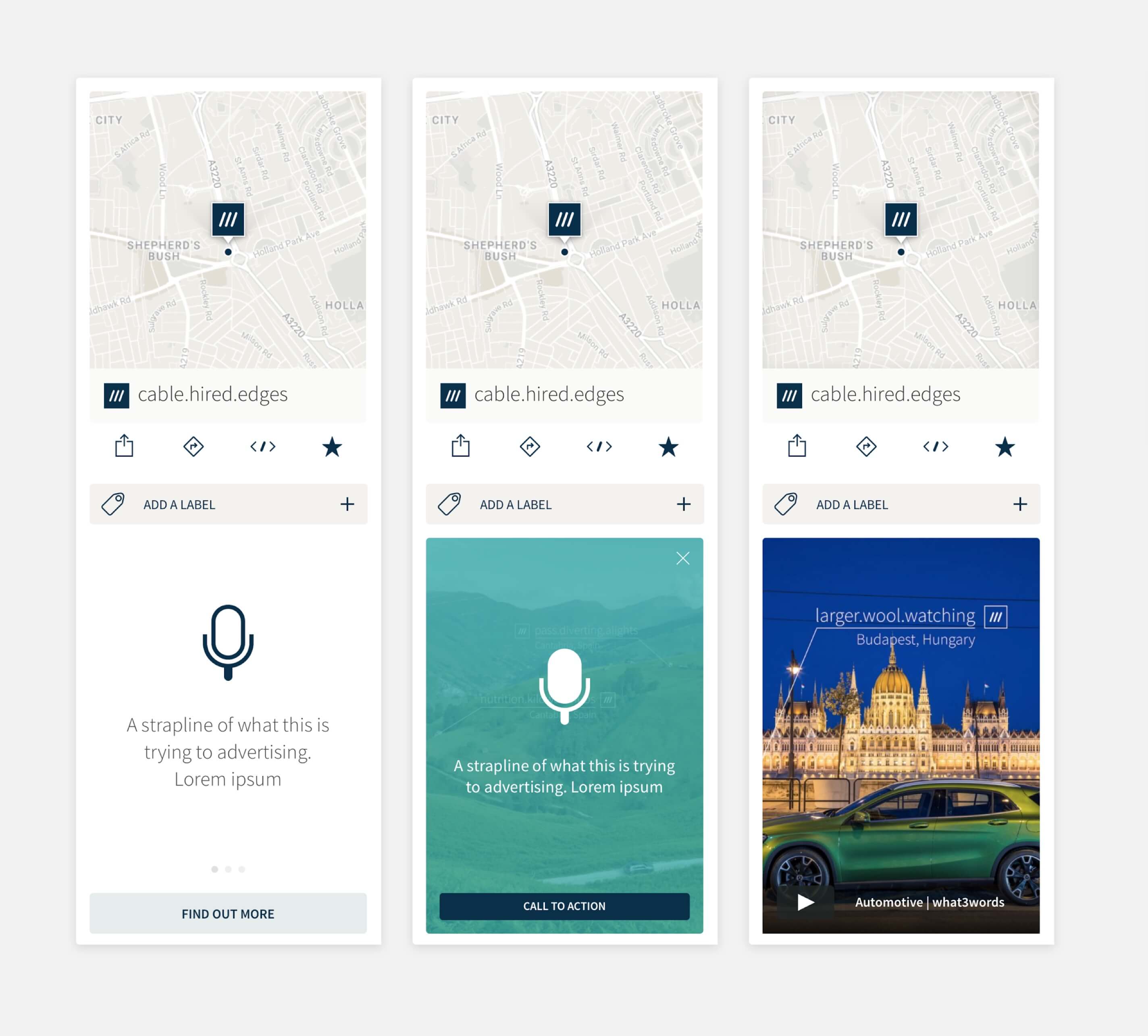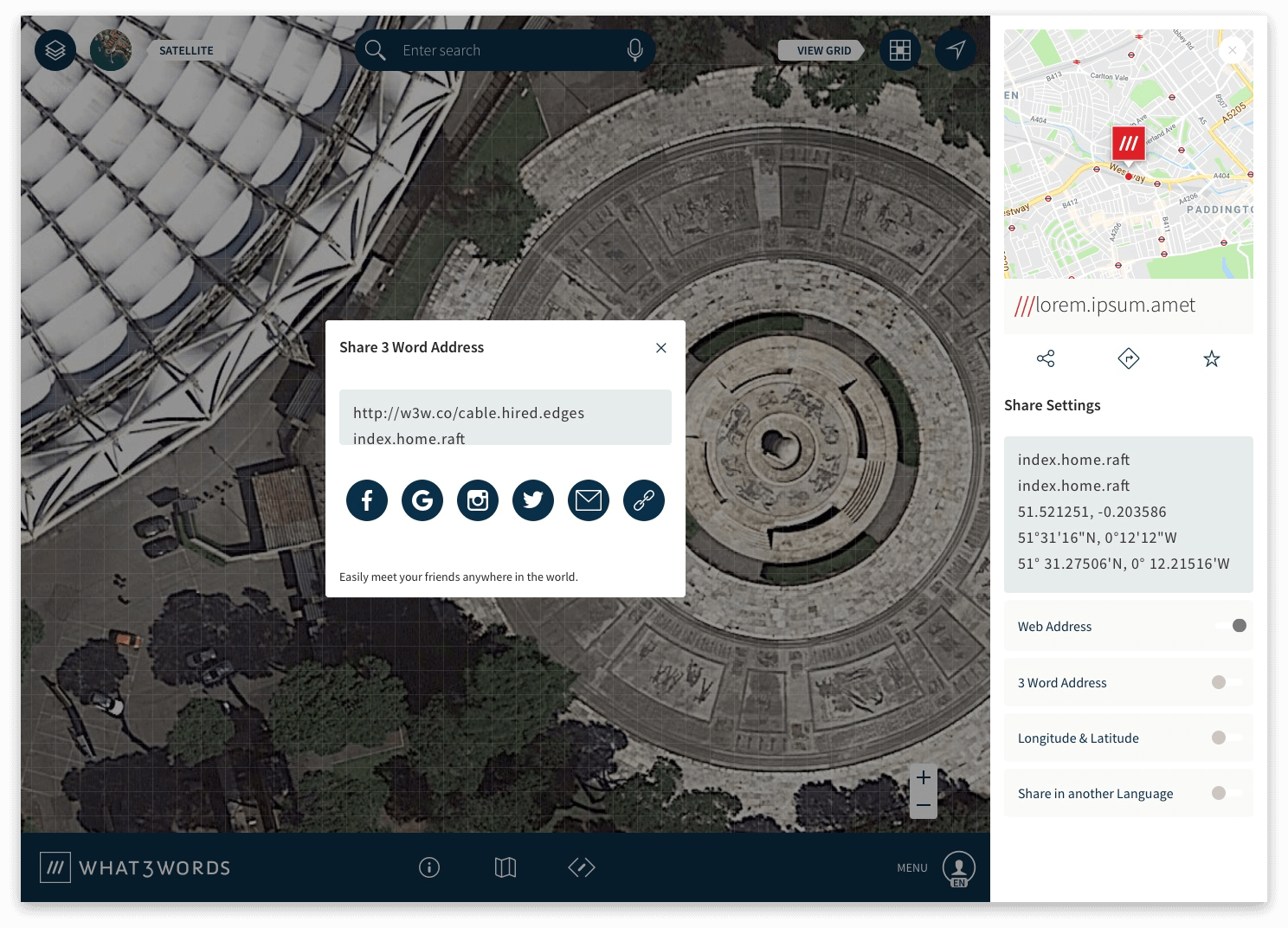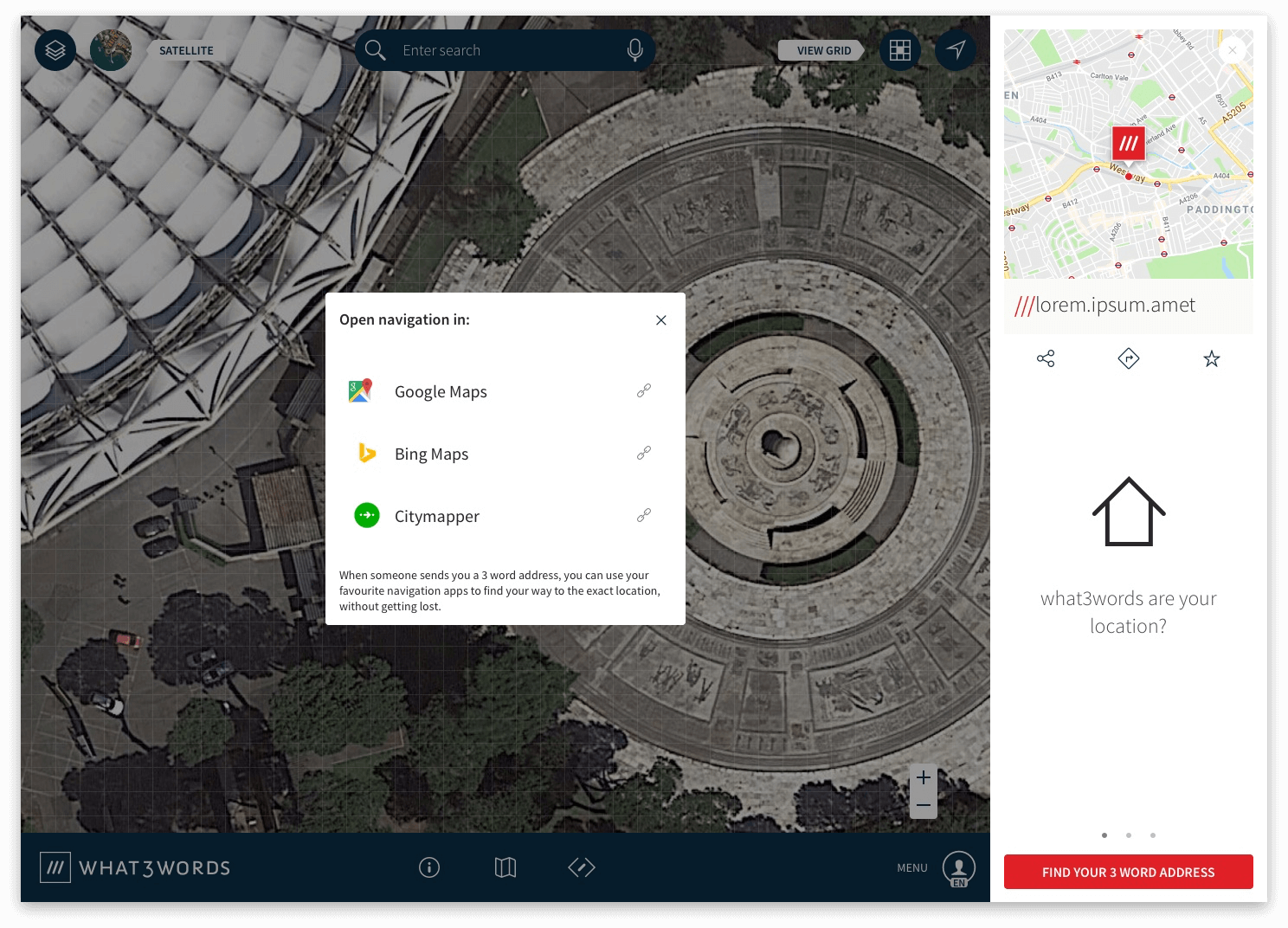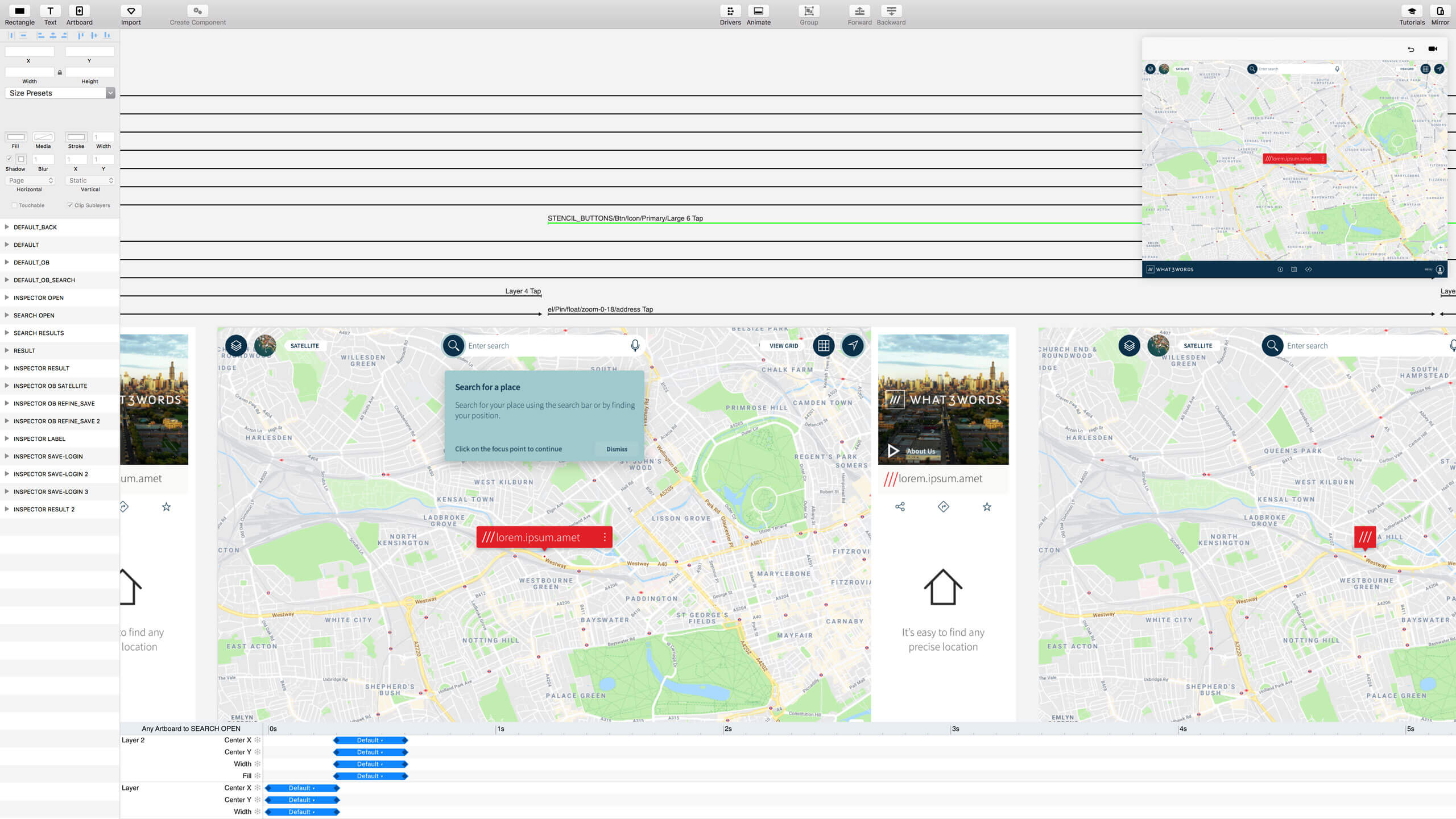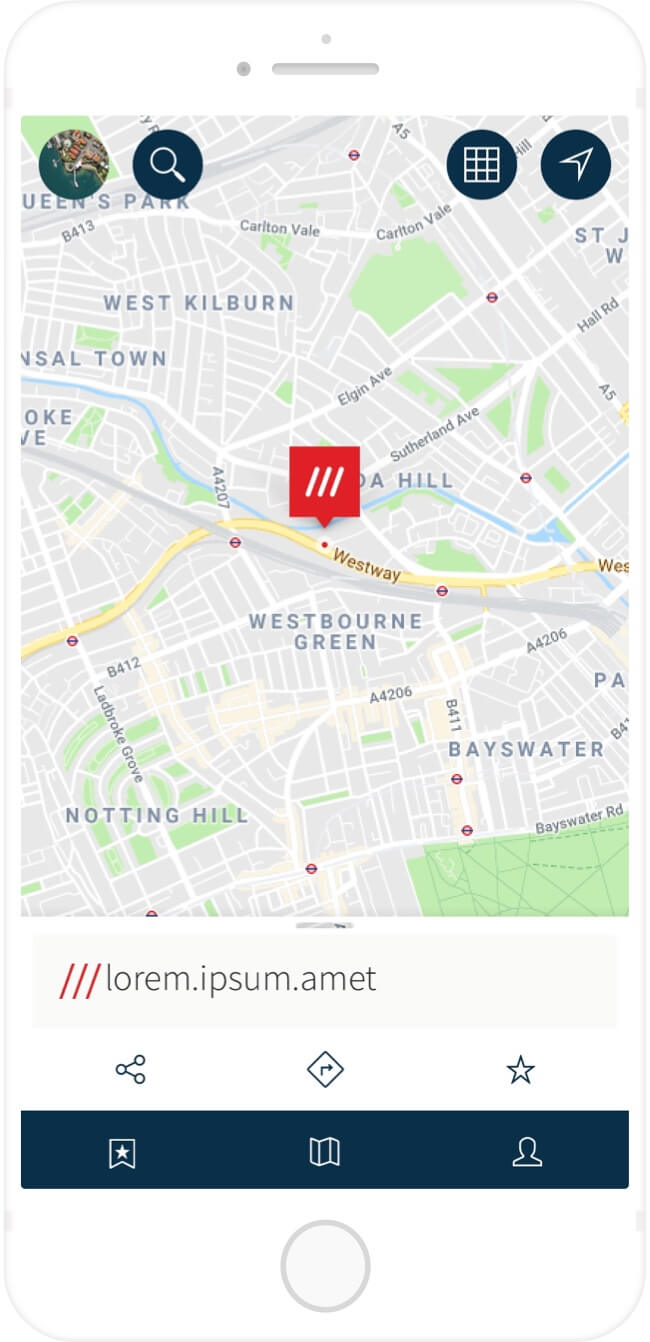what3word Map Web
helps you find, share and navigate to any precise location

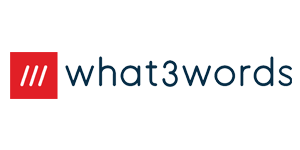
Client
what3words Ltd
Addressing & geocoding System
Year
2018
London, UK
Case Study Overview
At what3words, we believe that every 3m x 3m in the world deserves a unique 3 word address. Our innovative technology has revolutionized the way we talk about location, making it simpler to meet up with friends, discover new places, and explore the world without getting lost. Our 3 word addresses are displayed by hotels, restaurants, travel guides, and websites, and can be used in over 20 languages. Our web-responsive product is designed to be both easy to remember and communicate, making regular addresses seem cumbersome and outdated.
As the Lead Product Designer, I poured my passion and expertise into driving the company's growth and making a meaningful impact on people's lives. I established an efficient UX & Product Design workflow, crafted a solid UX-Strategy, and built a React-based Design System that served as a foundation for our products. Our web-responsive design system allowed our products to be easily accessible from any device, making it easy for our users to use our product on the go.
Through close collaboration with executives, stakeholders, and business partners, I led the charge on designing multiple products and successfully grew a UXD team of four permanent members and a group of freelancers. Working hand-in-hand with our engineers, we integrated Google Maps using APIs across most of our products, delivering exceptional user experiences that elevated what3words' position in the marketplace.
Note: Some information and details are excluded due to confidentiality reasons.
Managing the project
UX & Product Design work-flow

Problem & Opportunity
«”75% of the world suffers from poor addressing or none at all. The other 25% still lacks universal coverage. Whilst improvements have been made in mapping and navigation, defining exactly where “there” is remains a big issue.
The UN estimates that 4 billion people lack a reliable way to address their homes. They struggle to open bank accounts, register a birth or access electricity or water supplies, becoming invisible to the state.”»
In our web responsive product at what3words, we've integrated the powerful Google Maps API into most of our products, providing users with all the basic map functionalities and Google's signature look and feel. However, we've had to grapple with the challenge of standing out from Google and communicating that we are a location/addressing system, not just a map/navigation tool. We've put a lot of thought into how to achieve this without compromising on usability and user experience.
Main challenge
Our main challenge is to create a web responsive product that makes it easy for everyone to talk about everywhere. Our goal is to endorse, educate, and enable users to find and use their 3 word address.
To achieve this, we need to ensure that our product is user-friendly and accessible to people around the world. We will provide education and resources to help users understand the benefits of using our addressing system and how to find their 3 word address.
Our aim is to help people communicate their location more accurately and efficiently, saving them time and making their lives easier.
My role
Lead UX & Product Designer
Solution
To address these challenges, I have developed a new vision that focuses on enhancing the user's interaction with the map view on their first use. This includes determining the optimal time and method for presenting the grid to the user, as well as making it easy for them to switch to satellite view when refining their location. Additionally, I have proposed methods for encouraging users to save their 3 word address and highlighting its value in making their lives easier.
The Project
Approach
Product Audit
At the beginning of the project, my primary focus was to understand how poorly addressed the world is and how people are struggling with traditional addressing systems. On-site research revealed that street addresses can be inaccurate or ambiguous, road names are repetitive, and many homes and businesses are located far from the center of their postcode. Furthermore, informal settlements, parks, and other locations are often not addressed, making it challenging to navigate and communicate specific locations effectively.
As technology continues to evolve and become more integrated into our daily lives, the importance of precise and reliable addressing becomes increasingly crucial.
Research
To better understand user needs and how what3words could provide value, I organized internal workshops to analyze data and focus on the business's value proposition. One emerging point was the importance of how different types of users interact with maps around the world, with some having never used a map before.
A critical issue was the lack of mass adoption of addressing systems and the difficulty users face in locating their front door on a map. Our research highlighted that the most important aspect to focus on was the map experience. We needed to provide a clear understanding of what3words' technology and grid system, help users interact with the map, and find their exact location..

MAP Zoom levels discovery and grid concept
The following list shows the approximate level of detail you can expect to see at each zoom level:
1: World
5: Landmass/continent
10: City
15: Streets
19: 3 word address grid
20: Buildings



Challenge
Design functional and engaging Map experience
API Grid and 3 word address mark as Map overlay
«”The what3words RESTful API gives you programmatic access to convert a 3 word address to coordinates (forward geocoding), to convert coordinates to a 3 word address (reverse geocoding), to obtain suggestions based on a full or partial 3 word address (AutoSuggest, Voice AutoSuggest and StandardBlend), to obtain a geographically bounded section of the 3m x 3m what3words grid and to determine the languages that the API currently supports.”»
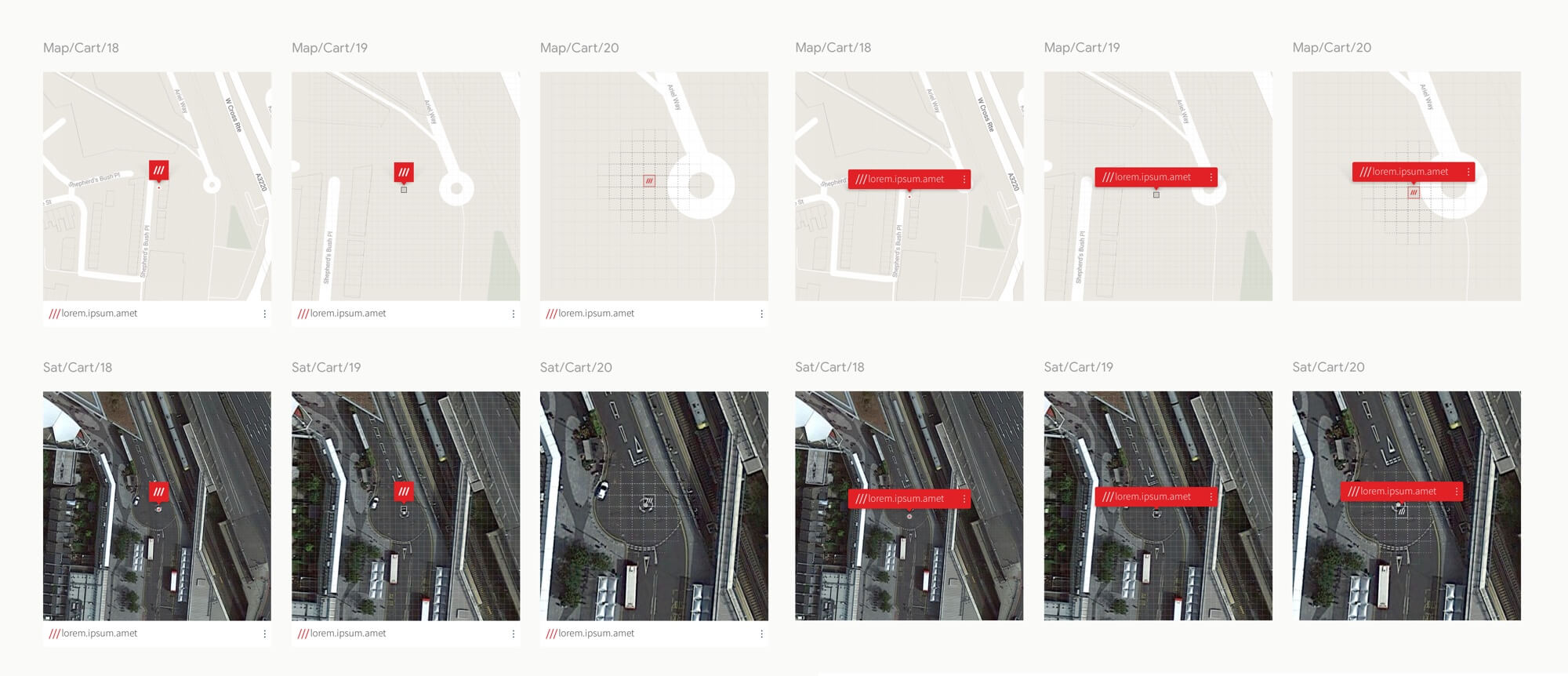
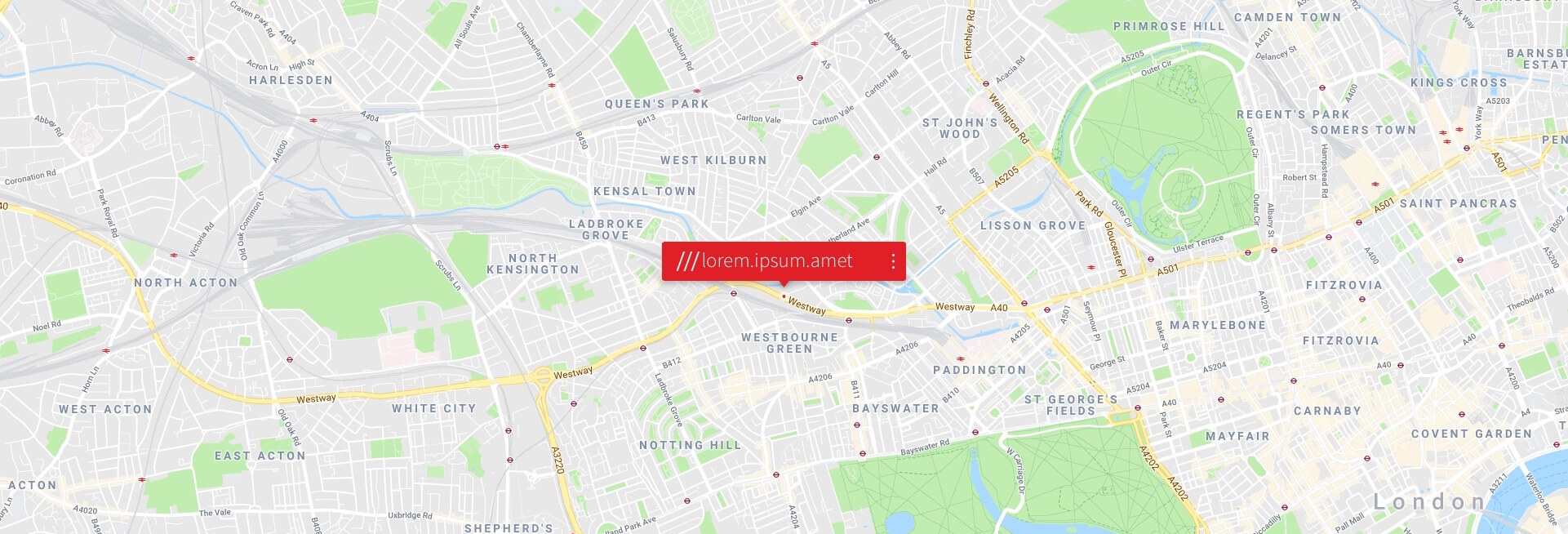
3 word address Mark interactions
During the development process, we focused on the evolution of the 3 word address Mark and its interactions with the user. This involved identifying how the Mark should look when a user saves their 3 word address and labels it for future reference.
Additionally, we ensured that the Mark's appearance would change depending on the zoom level of the map. This allowed for a seamless and intuitive user experience as they zoomed in or out on the map while identifying and saving their 3 word address.


Multilingual system, fonts and dynamic 3 word address text resizing
To ensure that people worldwide can use the 3 word addressing system, it is available in multiple languages, with new languages constantly being added. Users can select their preferred language or the language of the country they are in.
However, different languages have varying numbers of characters and font sizes, which presented a challenge. To address this, I implemented a dynamic text resizing system that adjusts the font size based on the number of characters in the 3 word address. This allows the text to fit into a fixed or fluid space and ensures that the text is always legible and responsive to the user's needs.

UX Strategy
Story Mapping: Task models and Scenarios
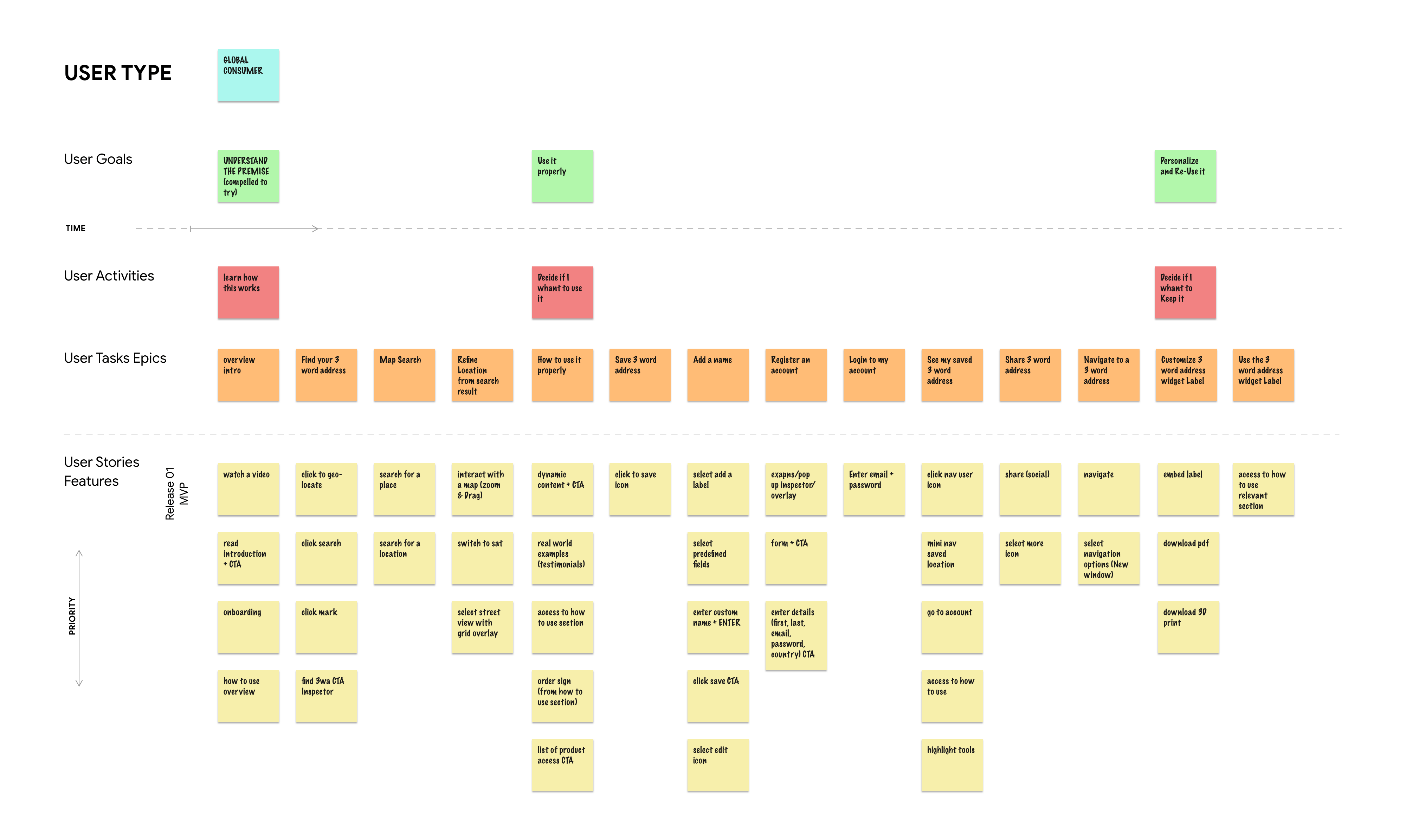
Search Scenarios
Search 3 Word Address - The search results always provide the user with 3 results. But a 3 word address search result isn’t provided until a user has added their first letter in the third word. (i.e. Index.home.r)
There is a combination of search results a user can execute. These involve searching for a location (3 word Address) or a place. Searching for a place will have additional information provided (i.e. distance from current location) should the user give permission to access their location.
Search empty-state
Empty state once the search bar has been activated is providing an overview about the difference to search a place or search a 3 word address location.
Search a place
Search results always provide the user with 5 results. User has given What3Words access to their location. Distance to be displayed in local system. Imperial/metric.



Refine Scenario
The app shows the 3 word address of where you're standing or from your search. Drag the map to move the square to the right spot. In order to do this task in the most effective way, the user have to switch to satellite mode to be able to refer visually and spot the exact location where move the mark. The highlight dotted grid is based on the main grid and thus the 3x3 grid itself. There are 5 levels to the squares; each step increasing in density. All the squares are 3mt x 3mt so a very accurate spot can be provided to refer on.


Save Scenarios
Save 3 Word Address - The save task provide to the user the functionality to keep the Location listed in his account. To allow the user to quick access his favourite Location is it possible to add a label with a Name. The name could be standard like Home or Work or completely editable with a custom name.
To finalise the task is necessary to login or create an account if the user doesn’t have one. Because this is a key task to support the conversion rate and the main user goal, the login request will be promoted to the user once the level of his engagement is very strong. So the previous tasks like search and refine are essential to induct the user to save and register an account.


Dynamic content can be a powerful tool to engage users and keep them up-to-date with the latest news, features, and case studies related to the product.
Inspector overview and concepts
Smart dynamic content as the user evolve
As the user interacts with the application and saves more and more locations, the content displayed in the saved locations section evolves in a smart and dynamic way. At the top of the list, the application provides a dedicated spot to show the locations that the user has labeled with a name. This helps the user to quickly spot and access their frequently visited locations without having to scroll through a long list.
The list of labeled locations can also be rearranged according to the user's preference. By holding and dragging up and down the components, the user can easily reorder the list to match their needs.
In the bottom section of the saved locations list, the application displays a chronological list of all the addresses that the user has saved without a label. This section is particularly useful for those who might have forgotten the name of a specific location or just need to quickly access the last few places they saved.
As the user adds more labeled locations or saves new locations without a label, the application dynamically adjusts the content displayed in the saved locations section to ensure that the most relevant and frequently used locations are always at the top. This smart dynamic content ensures that the user has quick and easy access to all their saved locations, no matter how many they have saved.
The what3words app helps you find, share and navigate to any precise location.
All the essential tools to use a 3 word address
what3words works with maps like Google, Esri,Mapbox, Open Street, Yandex and more...
Multiple Map integrations
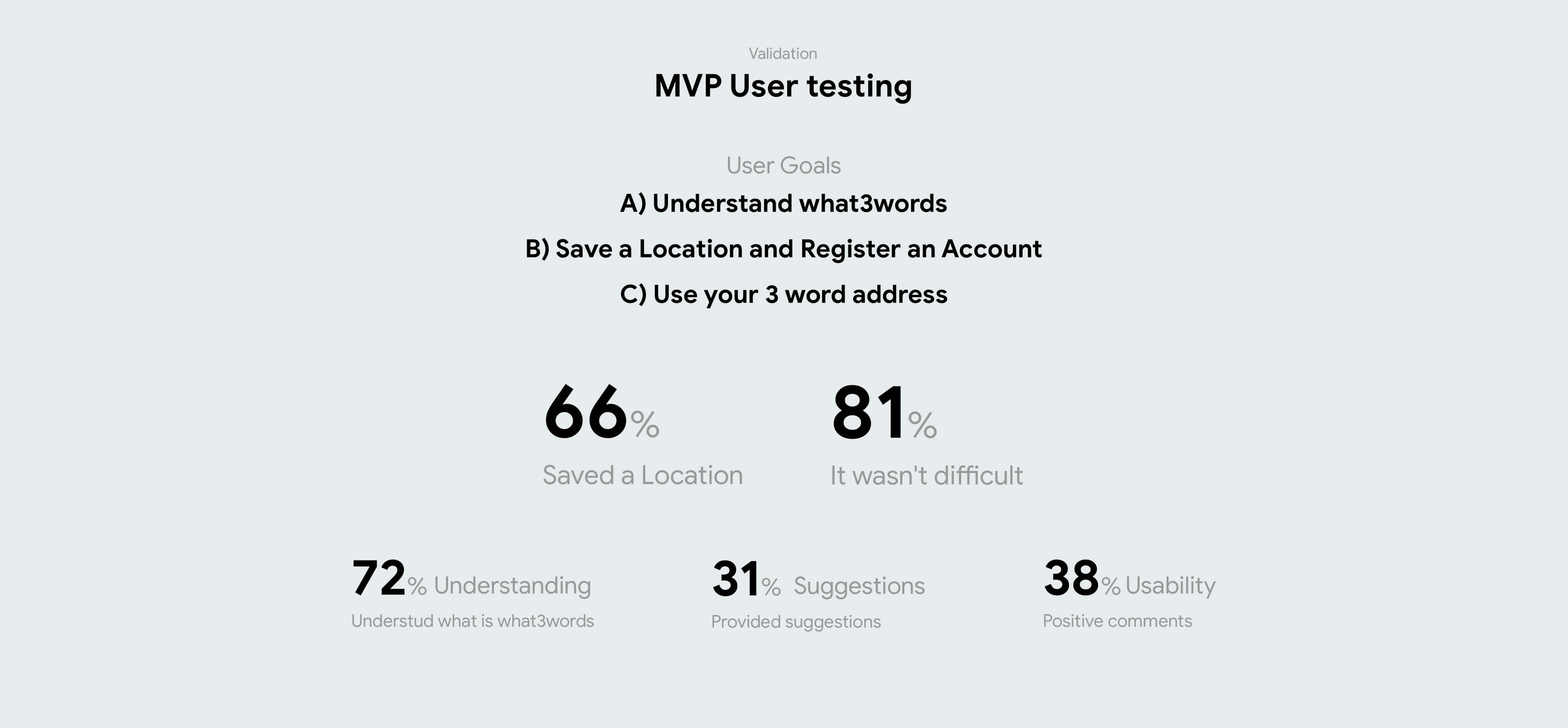
I've used Principles in my process to communicate or validate concepts.
High-fidelity Prototype
Learnings, results and output
The overall impression of the web responsive product is positive, with most users finding it easy to use. However, there have been some issues with bugs affecting the usability of the product, particularly on Android devices.
To improve the product, users have provided valuable feedback and suggestions. They want to learn more about how the product works so that they can explain it to others and decide whether to use it themselves. They also want to know about the different features available and how others use them to get the most out of the product. Additionally, users are interested in knowing where they can use the product in their everyday life and how others are using it.
Users have expressed a desire to provide feedback, join beta testing programs, fill out surveys, and write reviews to share their experiences. They also want to encourage local businesses to use the product to improve their communities. Lastly, they are interested in signing up for newsletters and following social media channels to stay updated on the product's progress.
Download the app
«”You’ll see 3 word addresses displayed by hotels, restaurants, travel guides and websites. They can be used in 20+ languages and are much simpler to remember, use and communicate than regular addresses. They’re also far more accurate and reliable.”»

My own vision, ideas and long term strategy
While my own vision, ideas, and strategies may not necessarily reflect the business vision, I believe it's important to provide an overview of how I think this product could evolve and improve in the long term.
To begin, I suggest engaging users through marketing and tutorials to build a relationship. We could showcase case studies about how partners adopted 3WA and allow users to discover stories about locations through user-generated content. This would encourage users to be part of a community and enable an empowerment proposition.
To support this vision, it would be necessary to let users create explorable content that is visible on the map. Lists of interests with private and public saved locations would be essential to support their privacy.
One idea I have is to link the 3wordPhoto App, allowing users to link their photos to their account and decide whether or not to publicly show their content to other users.
Furthermore, we could create a blockchain system based on crowdsourced information, enabling users to share real-time information and content about locations by simply sharing information about accidents, dangers, blocked roads, hidden gems, and other types of locations with the community.
In the future, I believe that IA, AR, and VR will play a key role in making the user experience even more immersive and exciting than we can currently imagine.
Tags
#Travel #Tourism #Voice #Navigation #PostalServices, #Automotive & #Mobility #Events #emergency-services. #Geolocation #GoogleMaps #API #wha3words #Grid-System #UX #ProductDesign #Interactions #ValueProposition
Fair dealing Disclaimer
Sections 29 and 30 of the Copyright, Designs and Patents Act 1988
I've written this Case Study for purposes such as research and private study, criticism or review, or news reporting. I’ve used part of the copy from the author website (what3words.com) that you can see under the quotations «”…”»



